

15 Nov The Travels of Rizal
Disillusioned with how Filipinos in the Philippines were regarded as second-class citizens in institutions of learning and elsewhere, the National Hero Jose Rizal left the country in May 1882 to pursue further studies abroad. He enrolled in a course in medicine at the Universidad Central de Madrid in Spain. In June 1883, he traveled to France to observe how medicine was being practiced there.
After his three-month sojourn in France, Rizal returned to Madrid and thought about publishing a book that exposed the colonial relationship of Spain and the Philippines. This idea was realized in March 1887, with the publication of the novel Noli Me Tangere in Germany.
Rizal was actively involved in the Propaganda movement, composed of Filipinos in Spain who sought to direct the attention of Spaniards to the concerns of the Spanish colony in the Philippines. He wrote articles for publications in Manila and abroad; convened with overseas Filipinos to discuss their duty to the country; and called on Spanish authorities to institute reforms in the Philippines, such as granting freedom of the press and Filipino representation in the Spanish Cortes.
Rizal returned to Manila in August 1887, after five years in Europe. However, his homecoming was met by the friars’ furor over Noli Me Tangere . The Archbishop of Manila issued an order banning the possession and reading of the novel, an order that was later reinforced by the governor-general. Six months later, pressured by the Spanish authorities as well as by his family and friends to leave the country and avoid further persecution, Rizal left Manila for Hong Kong.
From Hong Kong, Rizal traveled to Macau and Japan before going to America. Entering San Francisco, California, in April 1888, he visited the states of Nevada, Utah, Colorado, Nebraska, Illinois, and New York. He jotted down his observations of the landscape in his diary.
Rizal arrived in England in May 1888. In August, he was admitted to the British Museum, where he copied Antonio de Morga’s massive study of the Philippines, Sucesos de las Islas Filipinas , which Rizal later annotated for publication “as a gift to the Filipinos.” In the museum he devoted his time reading all the sources on Philippine history that he could find. He kept up his correspondence with various people, including his family, who were being oppressed by the Spanish religious landowners; the Filipino patriots in Spain; and his Austrian friend, Ferdinand Blumentritt, with whom he planned to form an association of Philippine scholars. From 1888 to 1890 he shuttled between London and Paris, where he wrote ethnographic and history-related studies, as well as political articles. He also frequently visited Spain, where he met with fellow Filipino intellectuals like Marcelo H. del Pilar, Mariano Ponce, and Graciano Lopez-Jaena.
In March 1891, Rizal finished writing his second novel, El Filibusterism o, in France. He planned to publish the book in Belgium, but was financially hard up. His brother’s support from back home was delayed in coming, and he was scrimping on meals and expenses. Finally, in September 1890, El Filibusterismo was published in Ghent using donations from Rizal’s friends.
Meanwhile, a rivalry had ensued between Rizal and del Pilar over the leadership of the Asociación Hispano Filipino in Spain. Rizal decided to leave Europe to avoid the worsening rift between the Rizalistas and Pilaristas, and to help maintain unity among Filipino expatriates. After staying for some time in Hong Kong, where he practiced medicine and planned to build a “New Calamba” by relocating landless Filipinos to Borneo, Rizal came home to the Philippines in June 1892.
10 Comments
Jessa pepito
Hi ,good eve .can I use this information for my brother’s research?thank you ..
Filipinas Heritage Library
Sure. Please just cite accordingly. Thank you!
I think it was September 1891 when Jose Rizal published his second novel, El Filibusterismo. And also, thank you for the information! :)))
Edalyn Jude Egan
Hi, I was confused with the dates when he finished El Filibusterismo. It was stated that he finished it in March 1891, but it was published in September 1890? Is it also 1891? Thank you!
Greggo Dela Cruz
Good day can I use this info for my module?
Roel Camaso
hello! can I use this information for my subject research?
Raquel tacay
Can i get some of the information here for my assignment.?
Beverly Anos
Can i view Rizal’s sojourn abroad?
Can I have a research on rizal’s sojourn abroad?
Jessica ongog
Hi good afternoon ca i ask you a question about the comment of Jose Rizal in europe

EAZY Traveler
Chronicles of a filipino travel journalist.
- Camarines Norte
- Camarines Sur
- Catanduanes
- Ilocos Norte
- Mountain Province
- Nueva Ecija
- Nueva Vizcaya
- Occidental Mindoro
- Oriental Mindoro
- Eastern Samar
- Negros Occidental
- Negros Oriental
- Northern Samar
- Southern Leyte
- Agusan del Norte
- Agusan del Sur
- Compostela Valley
- Davao del Norte
- Davao del Sur
- Davao Occidental
- Davao Oriental
- Dinagat Islands
- Lanao del Norte
- Lanao del Sur
- Maguindanao
- Misamis Occidental
- Misamis Oriental
- South Cotabato
- Sultan Kudarat
- Surigao del Norte
- Surigao del Sur
- Zamboanga del Norte
- Zamboanga del Sur
- Zamboanga Sibugay
- Brunei Darussalam
- Kuala Lumpur
- Negeri Sembilan
- Myanmar (Burma)
- Timor-Leste (East Timor)
- Scuba Diving
- Walking Tours
- Hotels and Resorts
- Travel Gear
Journey of Rizal
The following article is a commissioned article I wrote for this month’s issue (December 2010) of SMILE, the in-flight magazine of Cebu Pacific Air. You may browse the magazine online at http://www.cebusmile.com
EVERY TOWN OR city would have a street or park named after him. His diminutive yet dignified stature is immortalized in concrete or bronze. And his profile, distinguished by perfectly parted waves of hair, is etched on one-peso coins in every purse and pocket. Dr Jose Rizal may be as ubiquitous as jeepneys, coconuts and sari-sari stores in the Philippines, but Rizal Day — the anniversary of his martyrdom on December 30, 1896 — is almost always obscured by the fanfare of Christmas and New Year’s Day. Best known for his revolutionary novels Noli Me Tangere and El Filibusterismo, Rizal, together with Gandhi, Sun Yat-sen and Tagore, is one of the “Four Great Asians” that stirred modern nationalism in the region. It would be good to don an overcoat and travel the paths of Dr Jose Rizal.
Early days in Calamba
Tender childhood, beautiful town, Rich fountain of rejoicing And of harmonious music. That drove away all pain: Return to this heart of mine.
– A Tribute to My Town (Un Recuerdo A Mi Pueblo) by Jose Rizal

Calamba’s Rizal Shrine makes for a relaxing stop on a scenic road trip looping around Laguna de Bay. One can indulge in a bit of nostalgia, exploring the quarter. A bronze statue of little Pepe and his dog, Berganza stand and watch in the backyard in which the young boy found so much joy.
JP Rizal St, Calamba City (open from Tuesday–Sunday, 8am–5pm), tel: +63 (49) 834 1599.
At home in Hong Kong
Father has put on weight and his cheeks have become slightly pink. He is always cheerful, always walking around, and he is very much pleased with Hong Kong. They are very grateful for having been able to come here.
– In a letter to Rizal’s sister Maria, dated December 9, 1891

D’Aguilar Street, the sloping L-shaped road where Rizal’s eye clinic once stood, is now the epicenter of shopping and nightlife in the happening Lan Kwai Fong area. The small historical plaque at Century Square is swallowed up by stylish boutiques, neon signs and ritzy bars, but more interesting fragments of Rizal’s quieter colonial world linger at the other end of the street. Turn into Lower Albert Rd and Ice House St for the brick-faced Old Dairy Farm Depot (established in 1890), Bishop’s House (circa 1843) and an elegant flight of granite steps built between 1875 and 1889. Flanked by the last four gas- powered street lamps in the city, these steps carried Rizal down to Duddell St where another office of his once stood. He would walk up Shelley St, past the corner of Caine Rd to 2 Rednaxela Terrace (“Alexander” mispelled by a Chinese sign painter). Rizal would have appreciated today’s Mid-Levels escalators, the world’s longest outdoor system. Go to Lan Kwai Fong and Mid- Levels via MTR Central.
Respite in Dapitan
By the spreading beach where sands are soft and fine. At the foot of the mount in its mantle of green I have built my hut in the pleasant grove’s confine; From the forest seeking peace and a calmness divine.
– My Retreat (Mi Retiro) by Jose Rizal

Stopovers in Dumaguete
The steamer anchors quite near the shore because of the great depth of the water. Dumaguete spreads out on the beach. There are big houses, some with galvanized iron roofing… I observed that the people of Dumaguete are fond of decorating their houses with plants and flowers.
– From Rizal’s diary, August 1, 1896

Even the sun seems to favor this place. Every morning, a spectacular light show greets joggers at the lamp-lit and leafy shoreline of Rizal Boulevard, where our hero was said to have enjoyed long strolls during stopovers en route to and from Dapitan. A lesser known story according to old folks’ tradition is that he also had breakfast at the Locsin House — or what residents simply refer to as “the white house” — which is located at the corner of Sta Catalina and Locsin Streets. The white house was once the residence of Lt Cornelio Yapsutco, a champion of the revolution against Spanish rule. While the first level has been converted into shops, the second storey retains the hardwood floor and furnishings of an airy Spanish-period home. One can try arranging a visit to this private home through the Dumaguete City Tourism Office, tel: +63 (35) 422 9409 at Quezon Plaza.
Farewells in Manila
Farewell, my adored Land, region of the sun caressed, Pearl of the Orient Sea, our Eden lost, With gladness I give you my Life, sad and repressed; And were it more brilliant, more fresh and at its best, I would still give it to you for your welfare at most.
– My Last Farewell (Mi Ultimo Adios) by Jose Rizal

He was imprisoned at Fort Santiago, the northern corner of the Spanish walled city of Intramuros. At the Fort’s present-day Rizal Shrine commemorating his life and death, the multifaceted hero’s personal effects and excerpts from his writing are showcased with theatrical flair. Some items on exhibit are his sculptures, medical instruments, Hong Kong business card, seashell collection, specimens from Dapitan, early editions of his novels and the original farewell poem, Mi Ultimo Adios, written on a small piece of paper concealed in an oil lamp.
Outside, worn-out brass footsteps trace Rizal’s path out of Fort Santiago to face his executioners. From Intramuros, hop on a jeepney to Rizal Park (aka Luneta), which is the site of his martyrdom. The hero is entombed at Luneta underneath the iconic granite obelisk facing Kilometer Zero, a fitting resting place for a genius and instrument of nationhood. Alight at Central Terminal LRT-1 for Intramuros and UN Avenue LRT-1 for Rizal Park. Rizal Shrine, Fort Santiago, Intramuros, Manila (open from Tuesday–Sunday, 8am–5pm), tel. +63 (2) 491 3994.
Share this with your friends!
calamba cebu pacific dapitan dumaguete history jose rizal national hero smile magazine
2 Replies to “Journey of Rizal”
Rizal could escape the trial if he chooses to be out of the country but his love for the country is greater than his for travels. Nice article. BTW, I linked your site already, care for link exchange?
Thanks for sharing Ian!
What do you think of this post! Cancel reply

SEARCH SITE

Welcome to my website! I’m travel writer, photographer and online influencer Edgar Alan Zeta-Yap from the Philippines. Join me as I hike, dive, fly, eat and do pretty much anything in between across 7,641 islands and beyond. Need to reach me? Please write me an email .

Popular Posts
Recent Comments
- eazytraveler on Mount Hibok-Hibok, Camiguin: Amazing Volcano Hike via Itum Trail
- Chay Sebastian Ahmann on Mount Hibok-Hibok, Camiguin: Amazing Volcano Hike via Itum Trail
- eazytraveler on Balabac, Palawan: An Island-Hopping Guide
- eazytraveler on 8 Amazing Reasons to Stay at Park Inn by Radisson Iloilo
- SELVAKUMARAN PERIASAMY on 8 Amazing Reasons to Stay at Park Inn by Radisson Iloilo
Please enable JavaScript.
Coggle requires JavaScript to display documents.
VISUAL MAP OF RIZAL'S TRAVEL, SINGAPORE, EUROPE/PARIS, Rizal1 , , , ,…
- May 20, 1882, This mission was originally the idea of Rizal and was later supported by Paciano. Because of the news that Spain had already embraced liberal ideas
- On May 3, 1882, Jose Rizal sailed through a Spanish steamer named Salvadora bound for Singapore
- November 1885 - Rizal arrived in Paris and would spend four months in what he called the “costliest capital in Europe.” • Jose Rizal became an apprentice of a French ophthalmologist named Dr. Louis de Weckert from November 1885 to February 1886.
- Rizal arrived in Heidelberg, Germany, on February 3, 1886
- On August 5, 1887 Rizal was warned y his Friend and Brother in law not to return in the philippines due to the some threats about his novel.
- Jose Rizal arrived in Macau on February 18, 1888. Jose Maria Basa accompanied him.
- 1 more item...
- Three days after Haiphong anchored on the shores of Manila, Jose Rizal visited his family in Calamba

- The President
- The Vice President
- Secretary of Foreign Affairs
- Laws & Policies
- The Embassy
- The Ambassador
- Embassy Officials
- Former Ambassadors
- Consular Services
- Visa Information
- Civil Registry
- Legal Services
- Dual Citizenship
- NBI Clearance
- Assistance to Nationals
- Consular Fees
- Calendar of Events
- Filipino Organizations in Spain
- Sentro Rizal
- Trade/Investment
Jose Rizal’s Walking Tour Madrid
You can download the map here: https://www.philembassymadrid.com/rizal
The “Rizal’s Madrid” walking tour is available as a booklet and includes a map and itinerary.
(The PDF document is designed to be printed on both sides of landscape A4 paper and folded into an A5 booklet)
A WALKING TOUR OF PLACES ASSOCIATED WITH DR. JOSÉ RIZAL
Introduction.
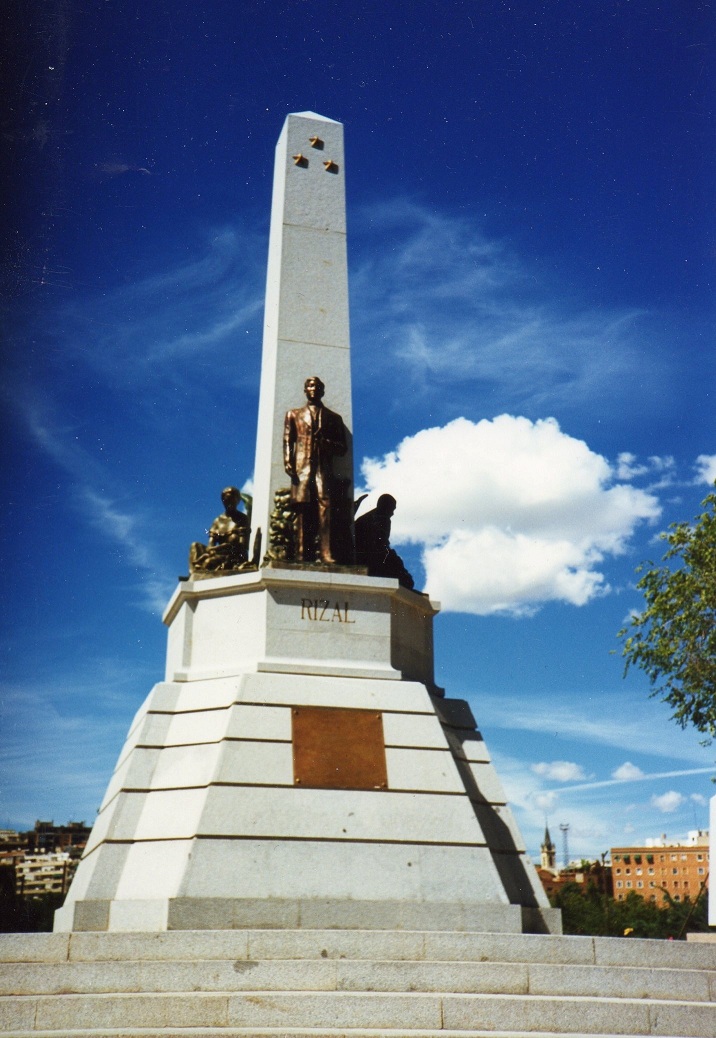
Did you know that there is a Rizal in each one of us? Or to put it another way, that there is an element of us in Rizal. A cliché perhaps or a trite expression, yet how could it be otherwise? As a Filipino, Rizal shared the anguish and anxiety of a foreigner in another land. Like the thousands of Filipinos here in Spain, Rizal came from a tropical country, with so much hope for himself, for his family and his country. Rizal could not have been different from you and I as, upon arrival, he looked for an immediate relative or friend to take care of him. He was given to comparing this or that place with his own Calamba and Laguna de Bay expressing thereby the common sentiment of exiles longing for the sites of childhood. Far from loved ones, solitude led Rizal to flirt with women as some of our migrants in Spain are wont to do. Likewise, he would be like anyone of us trying to understand the peculiar Spanish way of doing things – why for instance, the Spaniards have late breakfasts, late lunches and late dinners. To fathom the Spanish character would have required going through a process of discovering the places where they eat, how they live and what they have for entertainment.
Could Rizal be different from us in going to the rastro to buy cheap but still usable suits or shoes or trying the entertainment at the cava and maison at the Plaza Mayor, the excitement of an afternoon at the Plaza de Toros and the childlike pleasure of whiling away his time at the zoo? Would anyone be surprised that Rizal like most Filipinos participated in the game of chance called lotería ? It is hard to imagine that any place in Madrid could not have been traversed by Rizal. For like us, Rizal was curious to know the places in Madrid that Madrileños themselves found interesting and likewise, important to satisfy one’s basic needs.
Yet, it is also true that Rizal’s Madrid could have been different from ours. He was first of all an intelligent man, a scholar and a student, a man of varied interests that went beyond those possessed by many of us. Even during his time, his contemporaries thought Rizal to be very moralistic, for he was not given to spending idle moments – preferring the library to bars, or a discussion of issues to useless talk or chismes . When we therefore say that this or that place was “Rizal’s Madrid,” we have in mind the Rizal that to us represented the best in us. He had a higher purpose in life, and found meaning in becoming a model for his countrymen and a true lover of his country. The places we have identified and described as “Rizal’s Madrid” would show not so much those he simply visited as those which were the sites of his personal struggles for the recognition of his country as a civilized nation, a place of one’s birth which, to use Ninoy Aquino’s words, “is worth dying for.”
Where Rizal lived
Calle amor de dios 13-15.
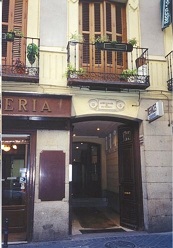
Our walking tour shall begin with the place of his residence from September 12, 1882 to May 1883, when he first arrived in Madrid. Rizal was prepared to lead a spartan life since he had a limited allowance of 50 pesos a month further reduced to 35 pesos when the Rizal farm was affected by bad harvests. There was also a constant increase in rent being imposed by the Dominicans from whom the Rizal family rented the farm. In this Madrid house, Rizal lived with Vicente Gonzalez, an old friend from his Ateneo de Manila days and a guy whom he fondly called Marques de Pagong . The house could have been chosen out of convenience since it was near the university and the atelier in which Rizal’s interest in the arts developed into fine form. He could therefore save on transportation costs. There was a piano and four big mirrors that created lasting impressions on Rizal.
Calle Fernandez y Gonzalez 8, 3º-4 (formerly C/. de la Visitación)
This was his place of residence from May 1883 to June 17, 1883 before Rizal left for Paris for a vacation. Situated in the old part of Madrid close to the Plaza Sta. Ana and right behind the Teatro Español, it stood near the corner of c/ Echegaray (formerly c/ del Lobo), where he criticized his fellow residents for engaging in idle discussions day after day. He lived here with Eduardo de Lete and Ceferino de Leon. By their agreement, they did not allow gambling ( juego de azar ) in their quarters.
Calle Ventura de la Vega (formerly C/. Baño 15, piso principal or 1º)
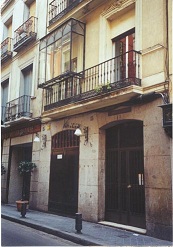
The association (CHF) was organized as a forum for Filipino students to discuss Philippine affairs. It sponsored regular bailes to raise funds for the association. It published a magazine financed by Juan Atayde, a Philippine-born Spaniard. Among those with whom Rizal discussed Philippine issues were the Paternos — Pedro, Maximino and Antonio — and Gregorio Sangciangco y Goson who made deep impressions on Rizal. The latter wrote El Progreso de Filipinas which said that a plan for agriculture, commerce and industry could usher in improvements and progress in the Philippines. The association did not last long, as Rizal wrote to his family on January 29, 1883, that it disbanded upon his suggestion apparently due to lack of sufficient interests of the members.
The residence had another attraction for Rizal aside from being the venue of political discussions. The daughter of the owner, Consuelo Ortiga y Rey caught Rizal’s fancy. However, Consuelo was torn between Rizal and de Lete. Rizal even gave Consuelo poems, musical pieces from Paris and guimaras , a kind of textile from the Philippines. The guimaras gift was acknowledged by Consuelo through de Lete, which seemed to have put an end to Rizal’s illusions about her love, his first derrota or defeat as he wrote in codes in his diary.
Calle Gran Via (formerly C/. San Miguel 7, 1º)
Rizal stayed in this place, a pension, as indicated in a letter to his parents dated September 11, 1883. Starting September 6 of that year, he was paying a daily rent of four pesetas a day. He said that this amount excluded the cost of kerosene which he had to buy himself so he could read and study at night. But perhaps the conditions were not that ideal for him as later, he had to board in another place with a Filipino student.
Calle del Barquillo 34, 4º
The Gran Vía residence was indeed only temporary since in the same letter to his parents, he asked that all future letters be forwarded to this address. He joined Esteban Villanueva who came to Madrid to study law but later became an established painter. It seems that painting and the arts as disciplines, had such an attraction to Filipinos since a number of them pursued these as careers – Luna, Hidalgo, Melecio Figueroa, an engraver and Villanueva.
Rizal at that point was in dire financial difficulties. In his report on his whereabouts, he mentioned his high grades in medicine, his victory in Greek contests and exams in Historia Universal but said he had to pawn Saturnina’s ring given to him, to pay for his exams. At one time, Rizal did not have any meal at all for one whole day. Fortuitously, he had been asked by the Paternos to deliver one of the main speeches at a banquet, a toast to Juan Luna and Felix Resurreccion Hidalgo who had just won first and second prizes (for the Spoliarium and Virgenes Cristianas Expuesta al Populacho ), respectively, at the art competition sponsored by the Exposicion de Bellas Artes in Madrid. He wrote these in codes in his diary which were later decoded by Miguel Unamuno, his Spanish friend, upon the request of Wenceslao Retana.
Calle Pizarro 15 (formerly C/. pizarro 13 , 2º Dcha.)
In a letter to his family, on August 29, 1884, Rizal informed them of living here with classmates Ceferino de Leon and Julio Llorente. It was very close to the Facultad de Filosofia y Letras at c/ Bernardo where he was to finish in a year his philosophy and letters degree. It was here where he wrote to his family why sugar prices had fallen – Cuba and Puerto Rico, as well as the colonies of Great Britain, had replaced the Philippines as the new sources of U.S. imports, the biggest at that time. It was also here where Rizal quietly started his novel Noli Me Tangere .
Calle Cedaceros 11, piso principal
This was perhaps his last residence in Madrid as he himself mentioned in an undated letter to his family. He spent 15 days here – from October 1 to 15, 1885 – sharing the place with Ceferino de Leon and Eduardo de Lete. He told his parents that he would be moving to Paris and Berlin to study ophthalmology under the best professors at that time. The eyesight of Teodora Alonso had gone worse and it was Rizal’s desire to treat her upon his return to the Philippines. On the matter of his return to the Philippines, his brother Paciano advised him to stay in Hong Kong instead since this would not be very far from home. The reputation of Rizal as an anti-friar intellectual had become public because of his speech at the Hotel Ingles at the banquet to honor Juan Luna and Felix Resurreccion Hidalgo. According to Paciano, returning to the Philippines would be fatal since a lot of Spaniards were raring to punish him for claiming that the Indios could be even better than the colonial masters if given the chance to develop themselves.
Where Rizal studied
Facultad de medicina, universidad de madrid, c/. atocha.
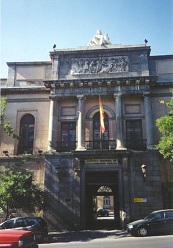
The corridor of the Colegio de Medicina (Hospital de San Carlos) has a marker indicating that it was here where Rizal studied medicine. He began his medical studies on October 2, 1882, and finished it two years later in June 1884. One of his professors was the then famous Marquez de Busto. The other professors he had mentioned were Drs. Mariani, Polo and Stocker. He apparently spent his residency at the Hospital de la Princesa where, as he had written to his family, he performed two operations on detached ligatures.
But as time went on, Rizal’s heart was not in medicine as shown by his enrolment in other courses. His medical interest was animated more by a desire to remove cataracts on his mother’s eyes; she was then close to being blind. Already losing her eyesight, Rizal’s mother could write to him only with the assistance of one of her daughters. Rizal would have to go to Paris to specialize in ophthalmology.
Escuela de Bellas Artes de San Fernando, C/. Alcalá
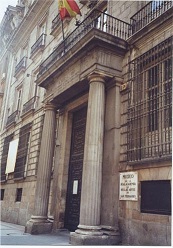
Ateneo de Madrid, C/. Prado, 21
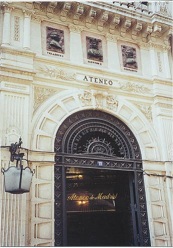
Even now, the ambience of the Ateneo is one of quiet, civility and seriousness, with people spending their time in high-ceilinged rooms and galleries. The theatre has retained the classical stage reminiscent of a place for Greek plays. On the hallway are portraits of its most prominent members. Rizal’s portrait used to hang at the end of the hallway.
Rizal’s Nationalist Consciousness
Parque del buen retiro.
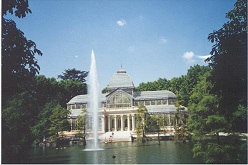
Calle Atocha, 43
La Solidaridad used this place as its office of publication. Founded in 1889, the newspaper was the voice of the Filipino community in Spain in its struggle for recognition by the Spanish government, of their desire for autonomy. Before his decision to return to a place near the Philippines (Hong Kong), Rizal might have frequented this place to check on the progress of the publication of his essays, the most famous of which was his La Indolencia de los Filipinos . The essay was in response to the then popular Spanish notion that the lack of progress in the Philippines was due to the laziness of the colonial subjects. Rizal asserted that there were factors beyond human control, such as the Philippines’ hot, humid and tropical weather, that would explain the supposed laziness of the Filipinos. And in any case, Rizal said, the Filipinos were no worse than the Spaniards who were lazy relative to the Germans and the Dutch of northern Europe. Having debunked the Spanish assertions, Rizal then proposed measures that would make the Philippines progressive, adopting in particular the suggestions of his fellow student, Gregorio Sanciangco y Goson – build railroads, adopt modern agricultural technology and solve the problem of land ownership for the Philippines to attain progress.
Los Gabrielles (C/. Echegaray, 17)
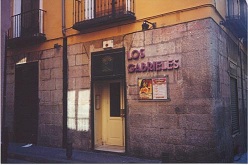
Today, the place is a venue for flamenco dance presentations and musical bands playing popular and classical Spanish songs. Its 19 th century ambience is looked upon with pride by its owners and personnel. There is a variety of wine served at the usual Spanish time of fun and enjoyment, that is, towards dusk until the break of dawn.
Viva Madrid (C/. Manuel Fernandez y Gonzalez, 7)
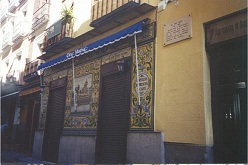
The place would tell us that it was not “all work and no play” for our national hero. We can imagine him and his friends spending hours in some afternoons sipping wine while admiring the beautiful women passing by. Rizal would even say that he had spent two pesetas and 90 centimos for a baile at the El Excelsior , perhaps a nearby cabaret for the public as was the style of the time.
Hotel Inglés (C/. Echegaray)
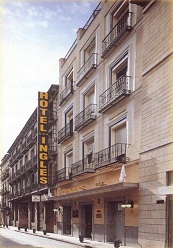
Aside from the Luna-Hidalgo banquet, the Filipino community would sometimes hold their cenas in the hotel in celebration of the New Year. Even today, Hotel Ingles is used by the Filipino community as, for example, when it celebrated the centennial of the Revolution and the First Republic with President Fidel V. Ramos in attendance.
Congreso de los Diputados (formerly Las Cortes Españolas)
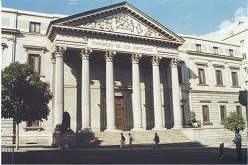
The Rizal Monument (Av. de la Islas Filipinas / Calle Santander)
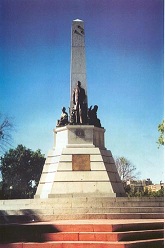
During the Rizal birth centennial in 1961, some countries honored Rizal with markers and monuments. Heidelberg, Germany where Rizal spent some time in the 1880s, erected a modest but elegant statue in his honor, for making that city famous through his poem entitled “To the Flowers of Heidelberg.” Mexico City built a replica of the Rizal monument at the Luneta in their famous boulevard called Paseo de la Reforma. At that time, Spain refused to honor the Philippine hero because of the sentiment then that he was a traitor to the mother country, Spain.
But times have changed. In a new spirit of broadened friendship between Spain and the Philippines, as well as a liberal view of why the latter launched a revolution, Rizal’s position has been elevated. He is not only a Filipino patriot; he is an exemplar of the best in the human race. And Spain itself is honored by Rizal’s presence here, for it is in this country that he developed his sensitivities and his scientific, artistic and literary skills — in Madrid, the heartland of the Empire.
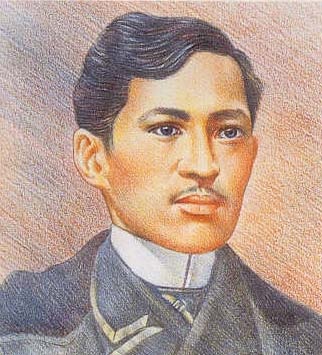
“Rizal’s Madrid”
is based on “ Casas habitadas y lugares frecuentados por Rizal en Madrid ”(1961) by Pedro Ortiz Armengol
Original text by: Jaime Marcó
Revised text by: Prof. Jaime B. Veneracion
Photos by: Nick Hidalgo and Exequiel Sabarillo
Editing, lay-out and publication: Embassy of the Philippines , Madrid
Footer Title
Philippine embassy madrid calle eresma 2, 28002 madrid | tel: +34 91 782 3830 | fax: +34 91 411 6606 | e-mail: [email protected] ..
Website design and maintenance by Apolo Informática .

Latest Stories

Unlocking Holiday Cheer and Cash: Online Side Hustles Using Social Media

Google Launches AR Beauty Ads: Try On Makeup Anytime, Anywhere! Get ready for a beauty revolution!

Google’s New Ad Formats for Generative AI-Powered Search Experience: What You Need to Know

An Expert Cheat Sheet for Glossy Hair: Tips and Tricks for Shiny Locks
Social connect, culture , travel, retrace jose rizal’s trip across the us 0 3987.
Rizal in the US
About a year after Rizal had published his first novel, Noli Me Tangere, in Heidelberg, Germany, he returned to the Philippines but stayed only for six months. The novel exposed the inequality and oppression Filipinos suffered under Spain. The Spaniards who held all secular power in the Philippines, the government and the church, did not approve of the way Rizal portrayed them in his work. Rizal fled to Hong Kong after six months of death threats and persecution in his homeland.
He stayed for a few months in Hong Kong before crossing over to stay in Japan, Rizal intended to make for Europe once more. The trip from the Philippines to Spain by steamboat involved traveling to Japan or Hong Kong before crossing the Pacific to Acapulco. From Acapulco, Mexico, the next leg of the trip was through the Gulf of Mexico, out to the Atlantic and then on to Europe.
Perhaps Rizal was afraid of being arrested by Spanish authorities if he landed in Mexico, or perhaps he just wanted to vary his travel route to Europe. This time, he took a steamer called the Belgic across the Pacific that took him to San Francisco, California. And while the steamer docked in the San Francisco port on April 28, 1888, Rizal did not set foot on US soil until May 4, six days after the Belgic had docked. Rizal and the other passengers were detained due to a supposed outbreak of cholera onboard which he later learned was a false report.
Rizal arrived in the United States at a bad time for immigrants. While the young country was not a stranger to importing cheap laborers, he had come when many citizens of Caucasian ethnicity—in layman’s terms, the Whites—stood against welcoming migrant workers. Locals feared that foreigners would take their jobs and crowd their cities. Politicians running for public office cracked down on immigration, and denied many foreigners entry into the United States to win votes.
Rizal realized that the ship held over 800 Chinese citizens seeking work on the US railroads. The US customs authorities had roped in the Health Department into quarantining all inbound ships from Asia to stop Chinese laborers from getting jobs on the railroads. Those on board protested and a week later, Rizal was allowed to disembark and begin his journey across the North American continent.
The Transcontinental Railroad System
Crossing the entirety of the continental US was difficult in those days. There were no airplanes or airports and there were no cars or buses and no highways. There was no system of highways along which stage coaches could travel. The fastest way to get from the West coast to the East cost of the United States was by train.
In the latter third of the nineteenth century, many independent railroad companies built and ran railroads that connected the towns and cities across the United States. Most sprawled across the more populated eastern coast and delved halfway into the continent, but none provided a segmented line connecting the East coast to the West until 1869.
In 1845, Asa Whitney proposed the idea of a railroad with a route from Chicago and the Great Lakes to Northern California. The idea centered around opening up the interior of the continent for several reasons: (1) the ease of transportation of people and goods, (2) allowing the ease of transportation prompted settlement, (3) and settlement of the American frontier would boost business, and the growth of the industrial economy. And while Whitney’s proposal was put on the back burner, legislation eventually circled back to the idea of a transcontinental railroad.
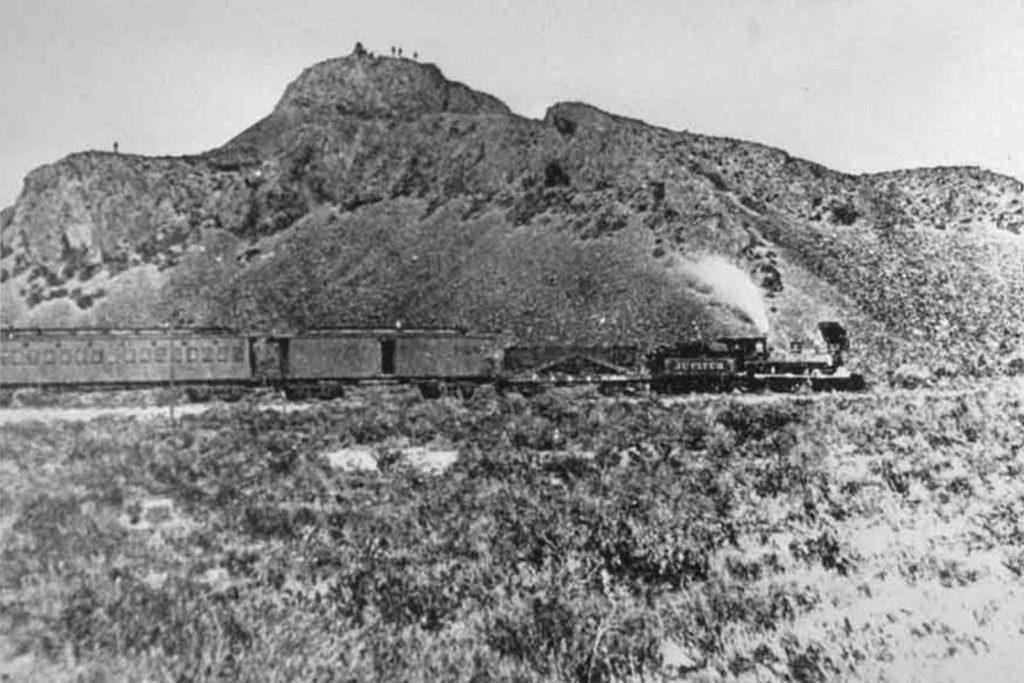
Construction of the railway began in 1863, under the two railroad companies: Union Pacific Railroad and Central Pacific Railroad. The latter began in Sacramento, California and worked eastward. On the other hand, the Union Pacific Railroad Company began from Omaha, Nebraska and built their railway westward. Omaha was already a major hub where the minor railroads of the Union Pacific Railroad Company converged from the eastern seaboard states. The area had previously been chosen by Abraham Lincoln as the location of a Transfer Depot, where up to seven railroads could transfer mail and other goods to Union Pacific trains bound for the west.
The US government contracted both railways and paid them by the mile. Both railways met around the north shore of the Great Salt Lake, in Promontory in what is known as a ‘transfer point’. This transfer point was agreed upon only after construction of both railways passed each other as they worked in opposite directions. Around 1870, the transfer point was moved from Promontory to Brigham City, a better location for servicing trains.
A later merger with the Southern Pacific Railroad built a direct route to the Oakland Long Wharf on San Francisco Bay. This system is what is known in the United States’ history as the Pacific Railroad. Ferries, and then sleighs in the wintertime, were used to transport trains across the Missouri River before they could access the tracks at Omaha. But by 1872, the Union Pacific Missouri River Bridge was completed. This is the railroad Rizal took, and his journey from San Francisco to New York harbor lasted only eleven days.
Rizal’s Notable Stops
As anyone who studies Rizal knows, the man recorded his life meticulously through his journals—a habit he’d nurtured since childhood. And through his journals, one may piece together Rizal’s sojourn across the continental US.
San Francisco and the Palace Hotel
Once permitted ashore, Rizal checked-in at the Palace Hotel for two days. The price for lodging was $4, and this included a bath and meals. The hotel was considered quite prestigious and expensive in those days. In his diary, he mentioned that he saw the Golden Gate bridge, and that the stores were closed on Sundays. His diaries also noted a preference for Market Street, a major thoroughfare in the city, and Dupont Street, in Chinatown—which is Gant Avenue today.
On May 6, a Sunday, Rizal checked-out of the Palace Hotel and rode a ferry across the bay for Oakland. There he boarded the first train that would take him east. The entire fare cost him $65.
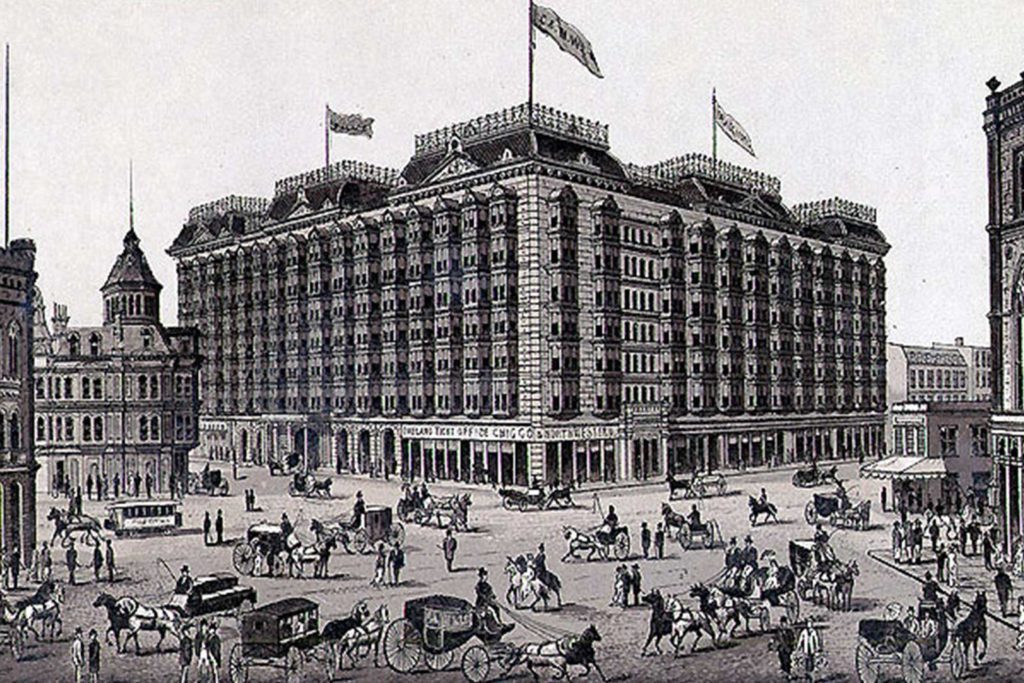
Sacramento
His diary entries hold that by evening fall of May 6, the train had reached Sacramento. There Rizal had supper and later slept in his coach. By morning, the train had reached Reno, Nevada where Rizal had breakfast. Both meals, hearty by his approximation, cost him only $0.75 cents each.
He noted that Reno had already been glamorized by propaganda as “The Biggest Little City in the World.” Of Nevada in general, he noted that it was a lonely place; lacking plant-life, with sand everywhere and bare mountains. For a man who spent his childhood in the tropics of Southern Luzon, and then most of his adulthood in Europe, the desert must have shocked him.
Of Ogden, Rizal noted that perhaps, with better irrigation, the area might be cultivated. Most of what he saw were fields and cattle. He did note, however that from Ogden to Denver, the clocks on the train and in the stations were set an hour ahead.
He also showed an appreciation for the banks of the Salt Lake, and the mountains in the distance where snow still covered the peaks. Perhaps in a bout of homesickness, he likened the mountains in the middle of the lake with Talim, the island in Laguna de Bay near his hometown. Rizal changed trains at Ogden, which proceeded to pass through two mountains through a narrow channel. Outside the cities and bustling transportation hubs, Rizal noted that most of the countryside was densely populated, even to the point of being lifeless.
Colorado was the 5 th state Rizal visited. By then, it was the 9 th of May. There he noted that of the three previous states, Colorado had more trees and horses. The train also moved at an upward incline, where snow and icicles adorned the train’s path.
Omaha and the Missouri River
Rizal described the state of Nebraska as plain. But as for the city of Omaha, he did admit that it was the largest city he’d seen since San Francisco. He marveled at the Missouri River, which he estimated as being twice as wide as the Pasig River at its widest part. He described the area as marshy; and that the train went slowly as it passed over the Missouri bridge before they entered Illinois.
Chicago
By May 11, they had reached Chicago. He did not stay the night, but he likely walked around the city as the train allowed a short layover. From his brief exploration he noted that every tobacco store had an Indian figure. That is to say, he had noted that tobacco stores advertised their wares with images of Native American tribesmen; though, he did not note any consistency as to which the tribe or nation they belonged.

Niagara Falls
The train stopped along the border of Canada on the afternoon of May 12, allowing Rizal to disembark and view Niagara Falls. While amazed at its sheer size, he compared it to the falls of Los Banos. He wrote that the latter was finer and more beautiful, while Niagara Falls was bigger and more imposing. In his letter to Mariano Ponce, he called the falls ‘the majestic cascade’ The train departed at night, and the ‘mysterious sound and persistent echo’ of the Niagara Falls followed him.
Albany and New York City
Once in Albany, Rizal once again noted the sheer size of the city and the Hudson River which the train crossed. He noted the beauty of the place, and of the ships ferrying along the Hudson. It was in New York, on Sunday May 13, 1888, that Jose Rizal’s transcontinental trip ended.
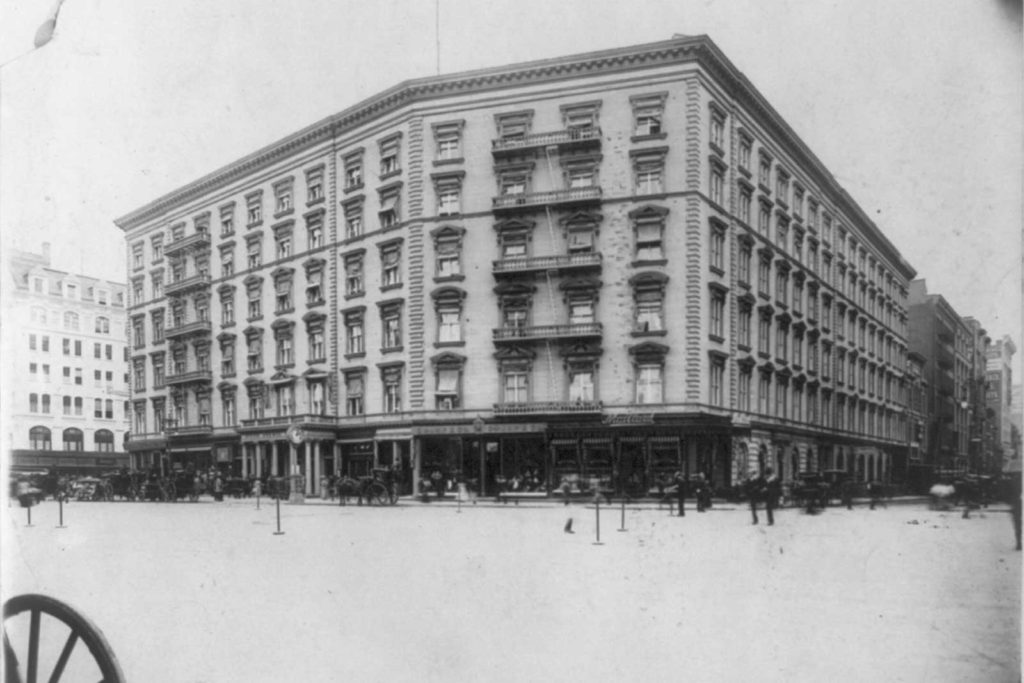
He rented a room at the Fifth Avenue Hotel, which he used until he left the country three days later. There are not many details of what he observed and saw in New York. In a letter to Ponce, he made an errant comment of visiting George Washington’s memorial. In another letter, he described the city to a friend as a place where ‘everything is new’. This is likely in comparison to Europe and even the Philippines, where the buildings were aged and antique, and made of other materials.
Rizal left the United States on May 16, 1888. He boarded a large steamer ship called the City of Rome, bound for Liverpool, England. As the steamer left the New York Harbor, he stood in the shadow of the Statue of Liberty on Bedloe Island.
Zaide, G. F. (1999). Jose rizal: life, works and writings of a genius, writer, scientist and national hero . All-Nations Publishing Company.
Life and Travels of Rizal (2014). Retrieved from: https://travels-of-rizal.weebly.com/blog/life-and-travels-of-jose-rizal
Leave a Reply Cancel reply
Your email address will not be published. Required fields are marked *
Save my name, email, and website in this browser for the next time I comment.
Most Popular Right Now
Unlocking holiday cheer and cash: online side hustles using social media 529, is lapu-lapu the first hero of the philippines 18663, how the philippine-american war led to the invention of the colt .45 handgun 15191, emilio aguinaldo: hero or traitor 13463, tinikling: a dance of identity 9286, andres bonifacio—who is he and why is he the unwanted national hero 9208, sponsored stories, most viewed.
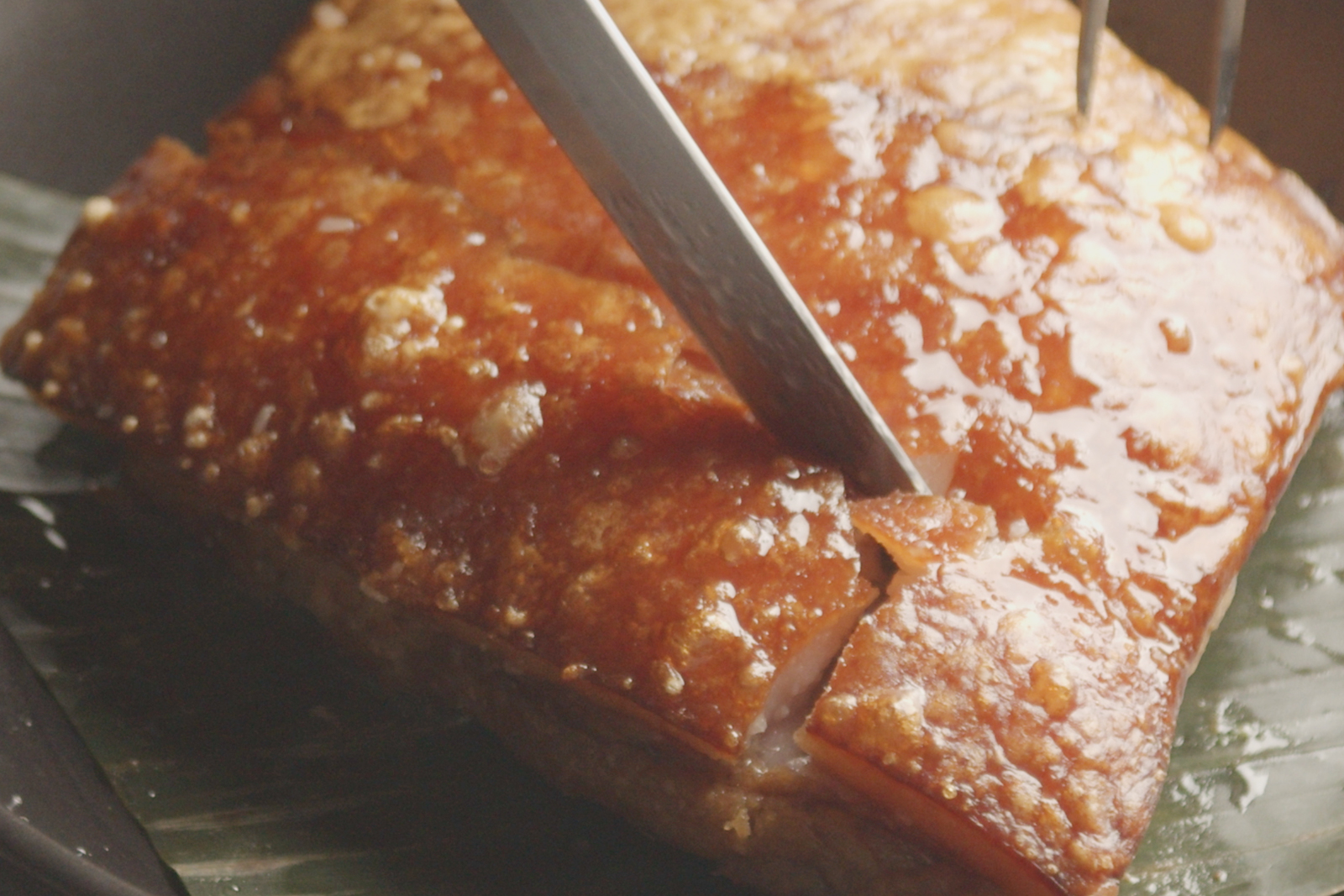
Crispy Air Fryer Lechon Kawali 01:23 1079

Ube Turon 01:40 966
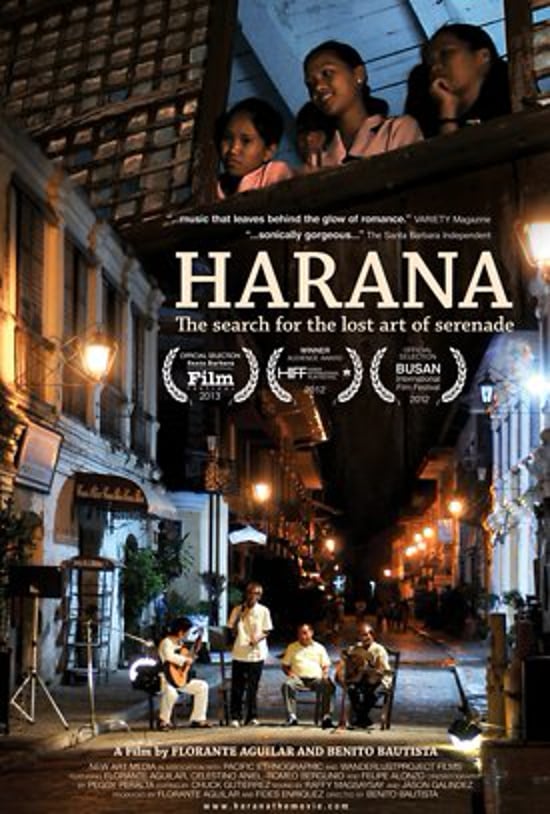
Harana – The Search for the Lost Art of Serenade 01:43:00 941

Pancit Bihon with Crispy Pork 02:59 908

Juicy Pork Adobo Recipe 03:11 836
Just Landed - Personalised Itinerary Service

Item added to your cart
Jose rizal – an intrepid traveller and national hero.
Jose Rizal (June 19, 1861 – December 30, 1896) was considered somewhat of a Renaissance man. Possessing an indistinguishable burning desire to learn, Rizal was fluent in many languages, a capable artist, published author and medical practitioner.
How could one man achieve so much? And all by the age of 33 when, by rifle fire, his life was cut short. One key factor to Jose Rizal’s successful pursuit of knowledge, understanding and his consequential insights was travel.
Starting out as a young medical student, Rizal left his Philippine homeland to study in Madrid, then France and later Germany. While learning his occupational craft, he became fluent in French and German (he was already fluent in Spanish due to the Philippines being a colony of Spain at this time) – bonus skills as a result of travelling outside of his usual geographical boundaries. Through the influential people he met and befriended due to his travelling, Rizal not only became fluent in 22 languages, but he was able to use this skill for the betterment of humanity. He would bring strangers together by speaking to them in their native French, German, Italian or English – “I speak with everybody and at times I serve them as interpreter,” he wrote. He had a lasting impact on the Tagalog language, the native language of his beloved Philippines, through devising a new orthography to “help simplify and systematize its writing.”
One of his friends, an Austrian scholar whom he exchanged reference books and connections with, wrote that Rizal, “can become for your people (the Philippine people) one of those great men who will exert a definite influence on their spiritual development.”
Rizal’s friend was right. Because he travelled with a sense of purpose and duty, Rizal was able to use the fertile intellectual spaces of the places he travelled to gain knowledge and insight about his homeland and how to better deal with the situation there. Taking a step back, he was able to gain a perspective that he would otherwise not have possessed. Travel was arguably a significant, if not crucial, factor in making him an effective thinker and communicator. Through novels that he wrote while still overseas, influenced by the interesting mix of people and ideas of an industrialising Europe, he articulately expressed the major problems faced by the Philippines, still under the thumb of Spanish colonial rule. Noli Me Tangere and El Filibusterismo remain influential and relevant to this day, still read and analysed by Philippine students – still influencing their spiritual development.
After travelling through Macau, Japan and America, he arrived in London. Availing of the British Museum, Rizal was able to write a comprehensive history of the Philippine islands before the occupation of Spain. It was his gift to the Filipino people, one that could facilitate their freedom through knowing their previous rich sovereignty. Travelling, in addition to increasing our knowledge and wisdom, brings a natural urge to share what we have discovered and learned – it makes us more generous.
The power of Rizal’s insights, perspectives, understanding, skills and knowledge gained through his travels proved too threatening to the Spanish ruling class in the Philippines. Upon his return, he was declared an enemy of the state for publishing his novels and exiled to Dapitan in the far South. He spent four years there, using the time to build a school, a hospital, a water supply system and to teach farming and horticulture.
Those four years also cultivated a separate rebellion group, although Rizal would be incorporated and implicated with their actions (considered treason) due to his known and influential ideas through his written works. Rizal would eventually be arrested, tried and convicted for rebellion, sedition and conspiracy. On December 30, 1896, he was executed by firing squad.
Considered to be his final work, Rizal penned Mi Ultimo Adios while imprisoned in Fort Santiago during the days leading up to his execution. From the heart and soul of a man about to make his last departure, its many verses are exquisitely written and a beautiful love letter to his most beloved corner of the planet – the Philippines.
"My lifelong dream, my deep burning desire, Is for this soul that will soon depart to cry out: Salud! To your health! Oh how beautiful to fall to give you flight, To die to give you life, to rest under your sky, And in your enchanted land forever sleep"
Salud, tagay , to Jose Rizal, to the Philippines and to the power of travel.
- Choosing a selection results in a full page refresh.
- 2024-04-13/U5Gy3KX5
- 2024-04-13/yjqAV7x7
- 2024-04-13/ETjAhniN
- 2024-04-13/H2BQiZHF
- 2024-04-13/Lskrf1cB
- 2024-04-13/mHtTRwp0
- 2024-04-13/csYwTfnK
- 2024-04-13/ksXA0yy6
- 2024-04-13/NR6nvFSm
- 2024-04-13/DmbvRSji
- 2024-04-13/R2LAv4a6
- 2024-04-13/iZMAhrY8
- 2024-04-13/xhFPFyPY
- 2024-04-13/hDzIjnqj
- 2024-04-13/gL2f2x2c
- 2024-04-13/LHrdujIx
- 2024-04-13/Ch95aXZ4
- 2024-04-13/uMjm045R
- 2024-04-13/tgZhWDiE
- 2024-04-13/ubdzeENz
- 2024-04-13/GeFFTTYM
- 2024-04-13/tyLZsUvT
- 2024-04-13/TkGX62Pw
- 2024-04-13/LDSrrq5f
- 2024-04-13/TykK7EGr
- 2024-04-13/GPxKfY4M
- 2024-04-13/Uqb88vrh
- 2024-04-13/g9Qa4Kxg
- 2024-04-13/9hbUwUie
- 2024-04-13/q7EsZyWD
- 2024-04-13/GdmHXsTY
- 2024-04-13/w4fMacw2
- 2024-04-13/WAX3Fbjp
- 2024-04-13/wmqU2gLs
- 2024-04-13/4pMDk7iv
- 2024-04-13/yb2qDZSy
- 2024-04-13/4K0N8q1v
- 2024-04-13/eeNaVLPH
- 2024-04-13/M3V3SW1i
- 2024-04-13/uiKf7gaZ
- 2024-04-13/7GdRKEIp
- 2024-04-13/F5yg6rxp
- 2024-04-13/jVIQaprt
- 2024-04-13/vnZxghXt
- 2024-04-13/hYGS0Y2e
- 2024-04-13/mAMpItWp
- 2024-04-13/WD1UikGv
- 2024-04-13/f1SkfVDE
- 2024-04-13/jevLScff
- 2024-04-13/QZFgz3A1
Find your worry-free escape.

- The Hero’s Journey: 6 Amazing Places Jose Rizal Visited
THE HERO’S JOURNEY: 6 AMAZING PLACES JOSE RIZAL VISITED
Jose Rizal is a multifaceted hero to many Filipinos. To kids in grade school, he’s the "hero of heroes". To scholars, he’s a genius.
As though his famous novels Noli Me Tangere and El Filibusterismo were not enough to earn the praise of Filipinos, he even went as far as being a scientist, a doctor, a polyglot, a poet, a journalist, and an architect, all rolled into one.
One fact that's not often emphasized is him being a seasoned traveler. This fact cannot be ignored because his travels played a very important role in who he came to be.
In light of this, wouldn't it be interesting to explore the places he visited, and trace the journey of a hero? Perhaps you’re planning for a vacation, wondering which places to go to with the family. If you want a historically enriching tour for the kids, go beyond the Jose Rizal Park and see other Rizal-related destinations. Some of these are a few hours drive away from Manila. Others would require a 16-hour flight. Whatever path you choose, below are some Rizal-related destinations to inspire you:
Calamba, Laguna, Philippines

Start off your Rizal tour close to home, and one with no entrance fee: Calamba, Laguna, the very hometown of Jose Rizal. Before he went to the Ateneo Municipal de Manila and the Universidad de Santo Tomas, he spent his childhood years in their two-storey family abode in this town. Their house, built primarily from stone and hardwood, is located near the town plaza. It’s the type of home upper-class Filipinos lived in during the Spanish occupation.
The interior features of the Rizal residence proved the affluence of the national hero's family. These include a huge reception area, wide stairways, a kitchen with a pantry leading out to the balcony, a spacious dining room, three bedrooms, and a library. There were servants’ quarters, too, located on the ground floor. The yard had a sprawling lawn and fruit-bearing trees, complete with a nipa hut that Rizal and his siblings used to play at.
It would be nice to get your kids to remember Jose Rizal’s works, as you tour each area of the house. Calamba is definitely a place to go to for an experiential trip down memory lane. No wonder it’s one of the top places international students visit , along with Fort Santiago.
Singapore City, Singapore

This city-state is another place to go to, to trace the voyage of Jose Rizal. Singapore was his first stopover en route to Europe. Frustrated with his Dominican professors at the Universidad de Santo Tomas, Rizal decided to go abroad in 1882 to continue his studies. This trip would mark the first of many more. Rizal’s education, both from his formal schooling and observations of the places he visited shaped his worldview and love for the Philippines.
He arrived in Singapore via the Spanish steamer called Salvadorra . He stayed at the Hotel de la Paz. He spent two days sightseeing in the city, visiting botanical gardens, Buddhist temples, and the statue of Sir Thomas Stanford Raffles, the country’s founder. Take your family, to these sites. The kids will especially love the Botanic Gardens, as they explore the different plant species. As for you, the picturesque scenery will be the perfect de-stressor .
Naples, Italy

After Singapore, Rizal went on board the French steamer Djemnah . It was here that he improved his French since most of the passengers speak the language. They stopped over at Ceylon (now Sri Lanka), resumed the trip, crossing the Indian Ocean, docked at Aden, carried on to Suez, passing through the famous Suez Canal, and eventually arriving at Port Said. The steamer then sailed to Europe; and in June 1882, he reached Naples.
He went on a tour around the city. He particularly paid a visit to Mount Vesuvius. If you’re looking for an outdoor adventure for the family, take advantage of nature walks around this volcano. There are also certified tour guides who bring people to the crater itself. Rizal also visited Castel Sant'Elmo . Include this in your itinerary to see a panoramic view of the city of Naples from its terrace
After the stopover at Naples, the Djemnah sailed to Marseilles, the last stop of the trip. Rizal stayed there for two-and-a-half days. He then hopped on a train bound for Barcelona.
Barcelona, Spain

When Rizal arrived in Barcelona, his impressions about the city weren’t that good. He thought the place was cluttered and unattractive. He didn’t like the people, either, perceiving them as unwelcoming. These feelings, however, changed over time, as he lived there and learned more about the place. What he loved most about the city was its atmosphere of freedom, a virtue he longed for, given the conditions in the Philippines back then.
Among Rizal’s favorite pastimes were strolling along the Las Ramblas . If you’re into the laid-back type of activities during your vacation, this one’s perfect for you. You’ll find numerous art, galleries, cafes, restaurants, and souvenirs along the streets. Kids and the young-at-heart, alike, will surely enjoy watching the human statues that Las Ramblas is known for. One travel reminder: take note of the best time to visit Barcelona, considering that you’ll be doing a lot of walking. It’s advisable to go there during spring between March to May.
While in Barcelona, Rizal received a letter from the Philippines that convinced him to move, again, this time to Madrid. Paciano, his older sibling, convinced him to pursue his medical studies in the capital of Spain. During this time, the Philippines was suffering from a cholera outbreak, which most likely gave him a stronger push to further his medical studies. It was also around this time that the news reached Rizal about Leonor Rivera's failing health.
Madrid, Spain

Rizal enrolled at the Universidad Central de Madrid, taking two courses: Medicine and Philosophy and Letters. He also improved his artistic abilities, particularly painting and sculpture, by going to the Academy of Fine Arts of San Fernando. Under the mentorship of different tutors, he learned several languages, including French, German, and English.
At the Hall of Arms of Sanz y Carbonell, he dabbled into sports, practicing fencing and pistol shooting. It's worth noting that the first sections of Noli Me Tangere were written in this city.
Rizal lived in different houses during his stay in Madrid. He resided at Amor de Dios, Calle de la Visitacion, Calle de San Miguel, Calle Bano , and Calle Pizarro , all of which you can still visit today. He used to eat at Restaurante Ingles , now known as Viva Madrid . This was where he would almost always find Graciano Lopez Jaena, a fellow patriot. If you get to visit this place, try their famous tapas , and imagine how Rizal powerfully delivered his famous speech, toasting to the victory of Hidalgo and Luna at the La Exposición Nacional de Bellas Artes de Madrid .
Paris, France

After completing his medical studies at the Universidad Central de Madrid , Rizal moved to Paris to focus on his ophthalmology practice. Rizal trained under renowned eye doctor Dr. Louis de Wecker. He was particularly interested in it because of the failing eyesight of his mother, Teodora Alonso Realonda. Later, his expertise would be instrumental in him meeting his wife, Josephine Bracken , who suffered a double cataract.
When he wasn’t at the clinic, Rizal used to scour the city and visit art galleries and historical sites. He went to the National Panorama, a massive building that hosted several art and trade exhibits. He also toured the Museum of Orfila which displayed waxed anatomy models. In 2011, it was transferred from Paris to the Université de Montpellier. And while you’re in France, take the opportunity to see other famous art galleries, like The Louvre, Musée d'Orsay, and Petit Palais.
Around the World with Rizal
Jose Rizal’s travel extended to many different parts of the world, including Germany, Switzerland, Hong Kong, Macau, Japan, the US, England, Belgium, etc. His experiences and discoveries in these countries molded his mind and heart, eventually deepening his loyalty to his country.
If there’s one takeaway in Rizal being a well-traveled hero, it’s this: wander and explore the world, but at the end of the day, come home and express your love to your own motherland.
LATEST POSTS
- 11 Language Learning Apps to Try to Connect With the World
- 14 Activities to Make Self-quarantine Fun, Productive, and Healthy
- How to Overcome Travel Anxiety During the Pandemic
- 7 Romantic Honeymoon Destinations in the Philippines
- Alta Vista De Boracay Hotel Reviews From Actual Guests
- Create a Timeline
Timeline of Rizals Travel
Philippines 1882.
May 3, 1882
Rizal boarded the salvadora with Antonio Rivera.
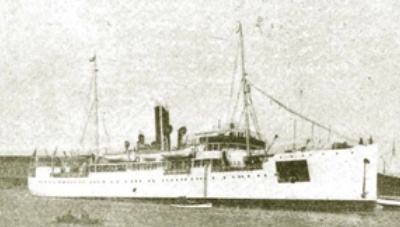
June 15, 1882 - September 2, 1882
-Rizal arrived and stayed at Barcelona for 3 months. - Rizal enrolled at the Universidad Central De Madrid.
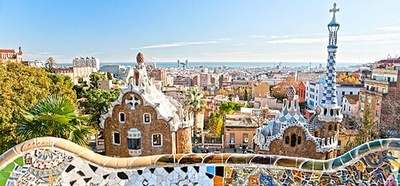
Germany 1886-1887
April 22 1886 - March 21 1887
-Rizal wrote the poem “A Las Flores de Heidelberg”. - Copies of Noli Me Tangere went of the press.

Manila, Philippines 1887
August 5 1887 - August 30 1887
- Rizal came back to Manila.
- Possession and reading of Noli Me Tangere was prohibited.
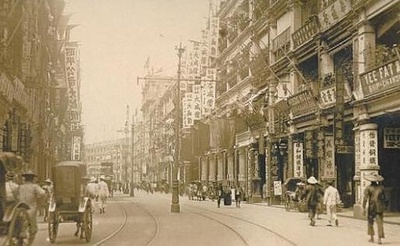
Hong Kong 1888
February 8, 1888 - February 16, 1888
- Rizal arrived at Hong Kong
- Rizal wrote to Blumentritt that Hong Kong “is a small but very clean city.”

Feb 28, 1888 - March 4, 1888
- Rizal arrived in Japan.
- He wrote Blumentritt about the honesty, courtesy,cleanliness and industry of the Japanese people.
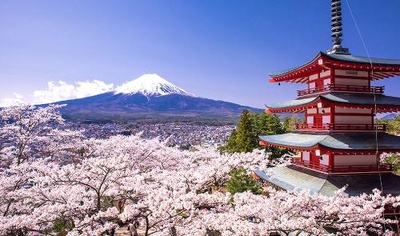
Biaritz, France 1891
March 21, 1891
- Rizal finished writing El Filibusterismo.
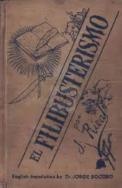
Paris, France 1891
October 3, 1891
- Rizal sent a letter with 600 copies of the El Filibusterismo, to Jose Ma. Basa in Hong Kong saying that he was definitely taking the next trip of the Melbourne for Hong Kong from Marseilles.
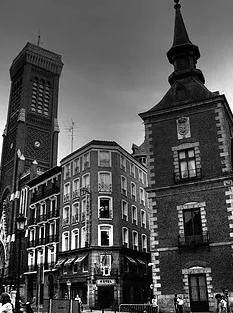
Philippines 1892-1896
June 26 1892
- Rizal arrived in the Philippines using the boat Don Juan.
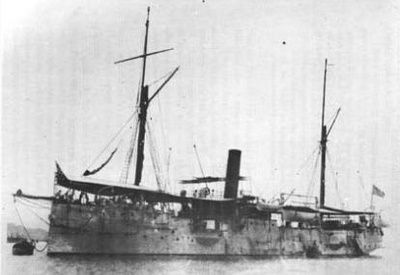
Dec 30, 1896
- Rizal was executed.
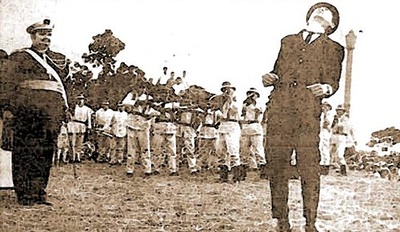
Download PDF
More options, download image, spreadsheet export.
Rizal's second journey
Travel of rizal.
- Subscribe Now
Rizal’s life in Germany revisited through new map
Already have Rappler+? Sign in to listen to groundbreaking journalism.
This is AI generated summarization, which may have errors. For context, always refer to the full article.
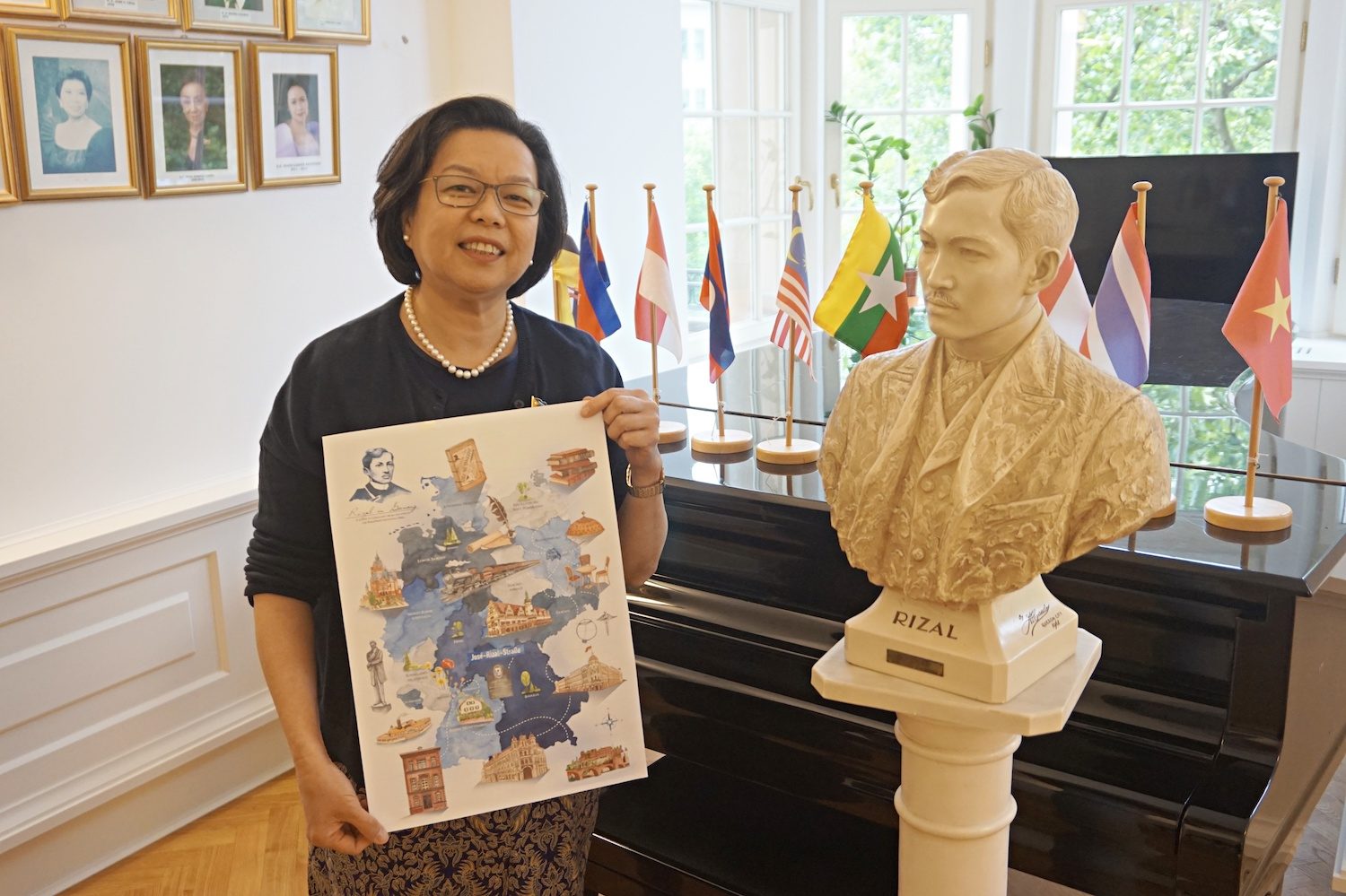
BERLIN, Germany – Jose Rizal, the Philippines’ revered national hero, always had a soft spot for Germany. He spent over a year in the country gaining expertise in ophthalmology and engaging in other intellectual pursuits. Rizal’s famous novel, Noli me Tangere which, many historians say, inspired Filipinos to seek independence from Spain, was first published in the German capital, Berlin.
In a letter he wrote before he left Europe, Rizal mentioned that he owed Germany his ‘best remembrances.’ Thus, it is no wonder that Filipinos and even foreigners who look up to him often seek his usual haunts in the country whenever they get to visit.
Philippine Ambassador to Germany Melita Sta. Maria-Thomeczek says this was the main reason why the embassy came up with an illustrated map – to make it easier and a lot more fun for Filipinos and other Rizal enthusiasts to retrace his steps.
“We’d like to rekindle once more our people’s knowledge of and interest in the life of Jose Rizal,” Thomeczek told Rappler. “We summarized what the diaries and the books say into a kind of trail and make it easily accessible, both as a printed material and a digital map.”
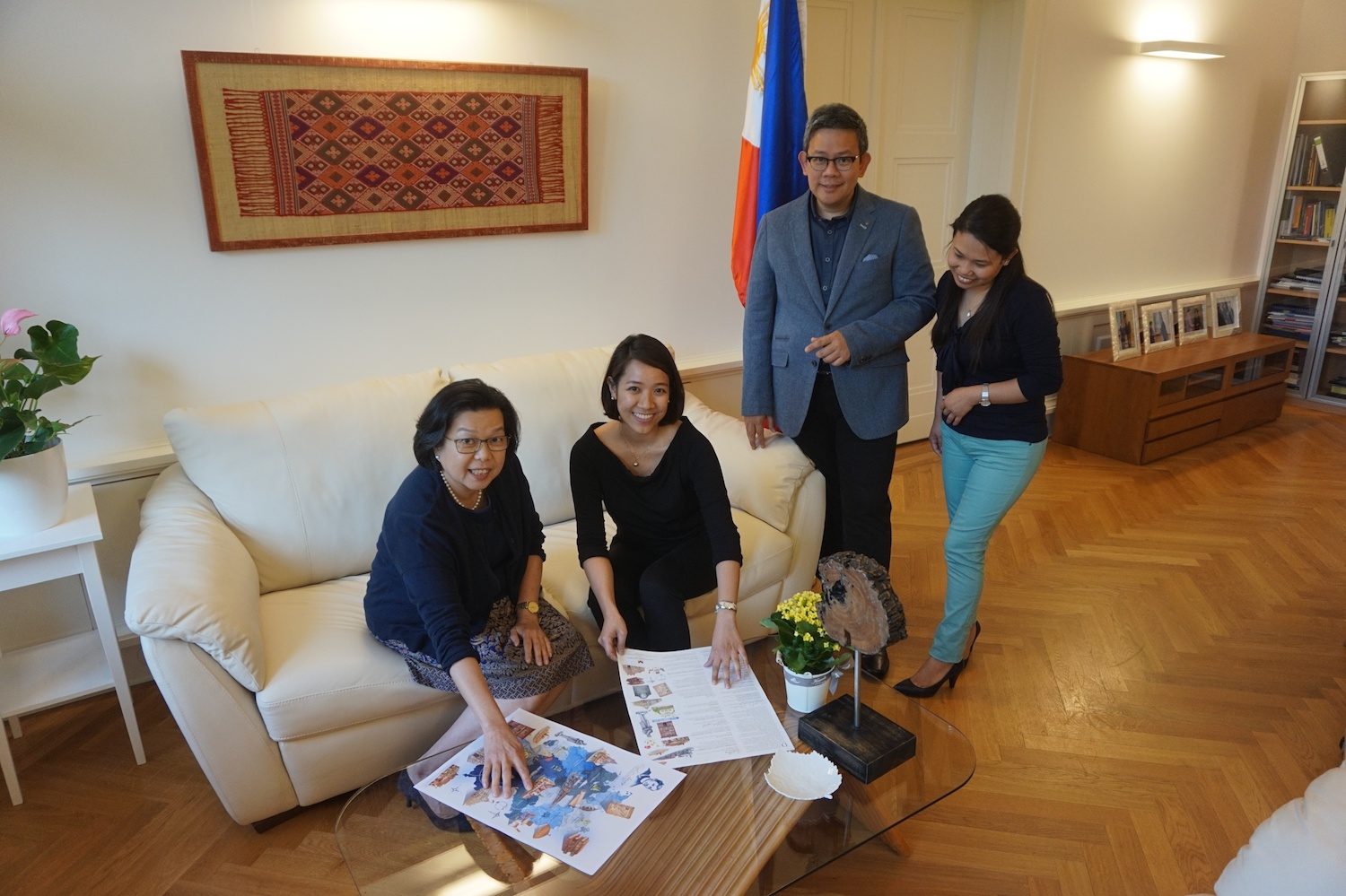
The Ambassador also shared that Filipinos who only hear of Rizal’s adventures in Europe once they arrive here, are often surprised and would usually want to know more.
The embassy worked with Knights of Rizal Lucien Spittael and Gerhard Müller to add interesting tidbits on the national hero.
Rizal, who lived in Jaegerstrasse 71, would often go for a cup of coffee along Unter den Linden – one of Berlin’s most famous boulevards. He would read the news on the Kaiser (Germany’s monarch) and German statesman Otto von Bismarck, as he sipped his coffee at Café Bauer. He also loved to go window shopping at the Kaiser Galerie.
Being the intellectual that he was, Rizal also joined the Berlin Ethnology Society and shared his passion for science with other learned individuals, mastering the German language in the process.
But it’s not only Berlin where Rizal stayed. He also lived in Heidelberg where he wrote a poem said to be inspired by the Forget-Me-Nots he saw near the Neckar River entitled, A las Flores de Heidelberg (To the Flowers of Heidelberg). He also spent a couple of months in the city of Wilhemsfeld where, like a lot of Filipino towns, boasts a park and a street named after Rizal, as well as a larger-than-life statue of him.
Rizal’s ‘scientific mother country’ truly played an important part in his journey to becoming the Philippines’ national hero. “Towards the end of his trip, Rizal published his novel at a small print workshop with only women as workers here in Berlin,” the Ambassador shared.
The map, launched today on the occasion of his 156th birth anniversary, is available for free at the Philippine Embassy in Berlin. It will also be available for download from the embassy website . – Rappler.com
Add a comment
Please abide by Rappler's commenting guidelines .
There are no comments yet. Add your comment to start the conversation.
How does this make you feel?
Related Topics
Recommended stories, {{ item.sitename }}, {{ item.title }}, ph collegiate sports, ‘be brave’: feu lady tamaraws raring to exceed goals after clinching final four return.

LIST: UAAP Season 86 champions

Beyond Angge: UST flashes deep, Final Four-ready form as dehydrated Poyos sits out

Not just a Canino team: La Salle coaches demand more leadership as MVP recovers

PBA legend Sean Chambers excited to bring ‘Mr. 100%’ energy to UAAP with FEU
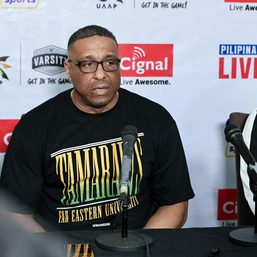
Philippine volleyball
Showdown ready: choco mucho, creamline score quick wins before sister battle.

Team standings: 2024 PVL All-Filipino Conference, Spikers’ Turf Open Conference

Cruise control: Eya Laure credits solid Chery support system after 4th straight win

Checking your Rappler+ subscription...
Upgrade to Rappler+ for exclusive content and unlimited access.
Why is it important to subscribe? Learn more
You are subscribed to Rappler+
Shout! Pinoy tayo!

- Early Inhabitants
- Culture of the Philippines
- The Philippine History
- The Republic of the Philippines
- The Philippine Presidents
- Rizal's Family
- Early Childhood
- Philosophies
- Different Characters
- Rizal's Lovelife
- Rizal's Works
- Sketches Made
- Maps & Plans
- Noli Me Tangere
- El Filibusterismo
- Rizal Groups
- Poems of Kim Porras
- Photo Gallery
- About the Creator
Philippine History and Rizal
kimporras8@gmail.com
+639 42 7778 **** +639 07 3663 ****
Search site
© 2011 All rights reserved.
Make a free website Webnode
- Yekaterinburg
- Novosibirsk
- Vladivostok

- Tours to Russia
- Practicalities
- Russia in Lists
Rusmania • Deep into Russia
Day trip to Suzdal from Moscow: transport, sights, maps and tips
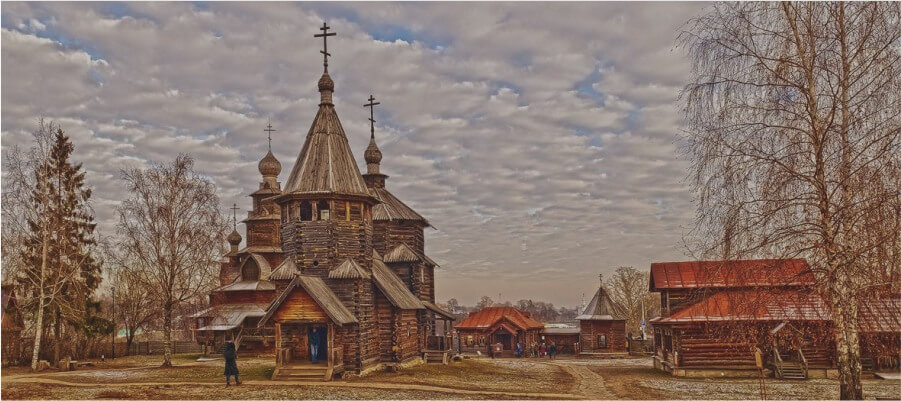
DAY TRIP TO SUZDAL
Suzdal is one of the most popular destinations on the Golden Ring and the whole city is often described as an open-air museum. The city has no railway station and practically no heavy industry, meaning that is has preserved its provincial charm and a great deal of architectural monuments.
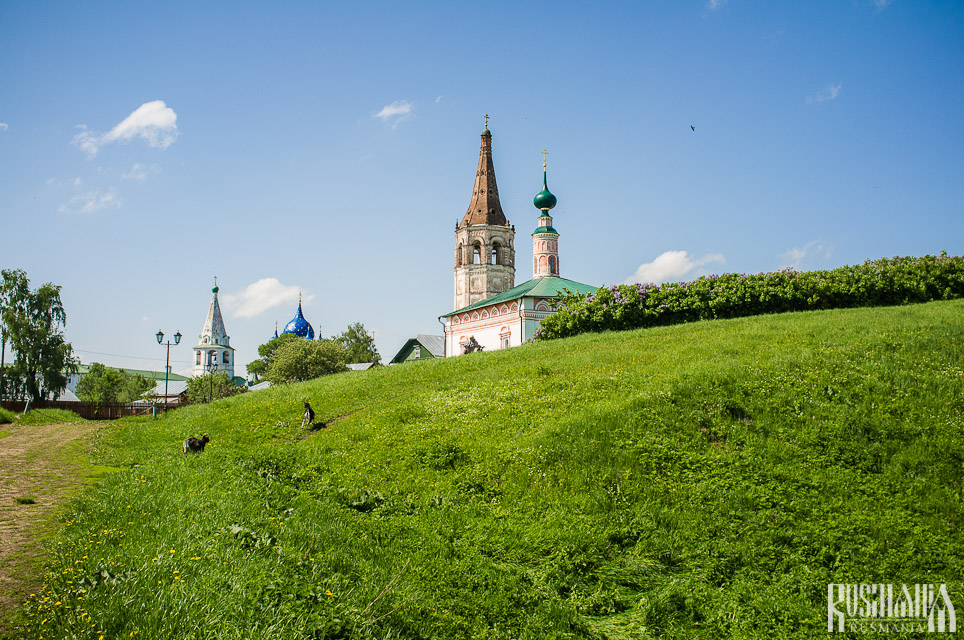
From Moscow, Suzdal is not as easy to get to as Sergiev Posad (the closest Golden Ring city to the capital) but it is worth going the extra distance as Suzdal provides more of a contrast from Moscow. If you make use of high-speed trains it is possible and not too demanding to visit for even just a day, but of course spending the night there is recommended to soak in the atmosphere or to combine it with a visit to neighbouring Vladimir. As the city is a very popular tourist destination you will have no problem finding a cafe or guesthouse there. There is practically no public transport in the city, but the city is small and most sights are located relatively close to each other.
Getting There and Back
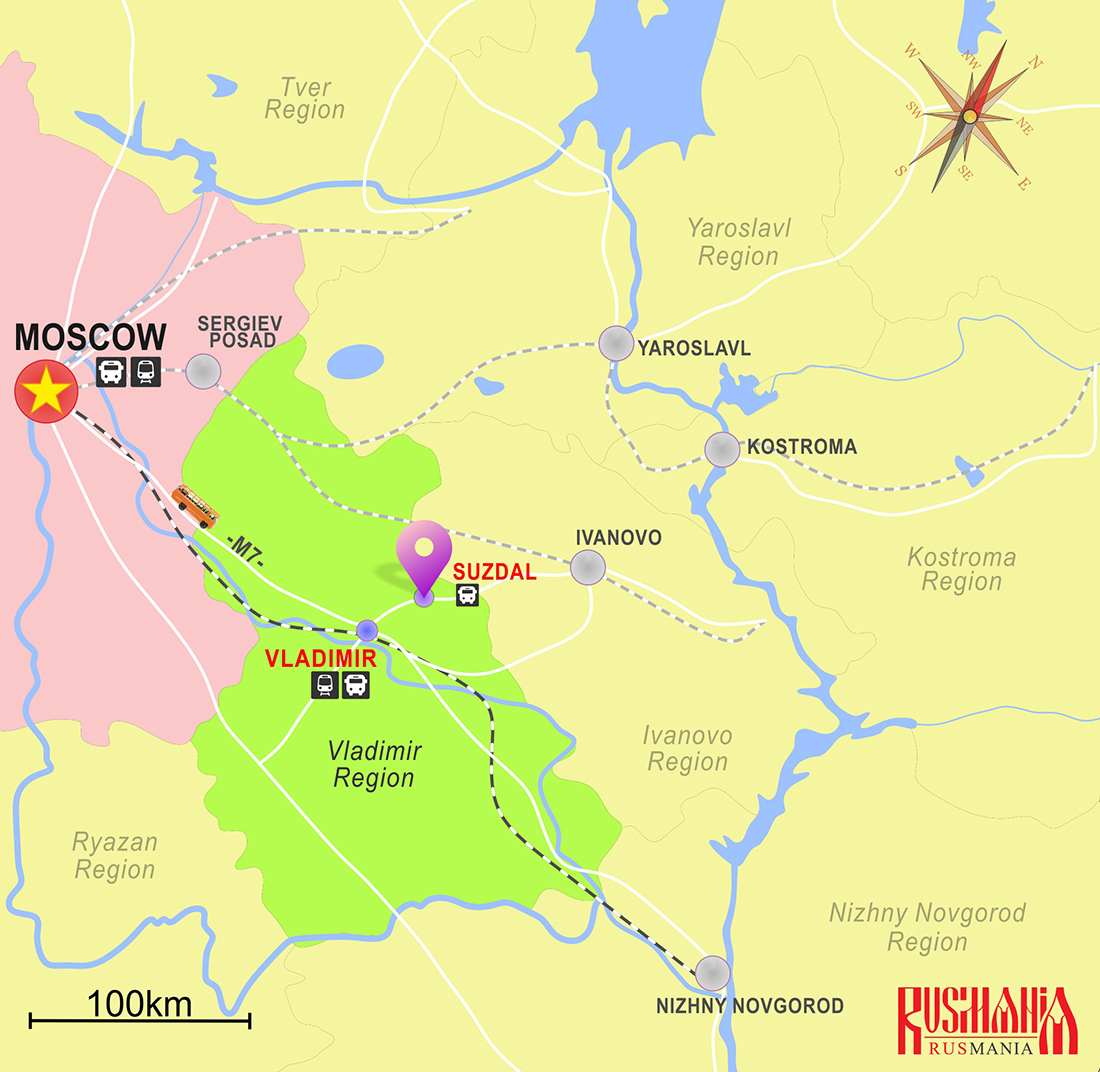
Via Vladimir
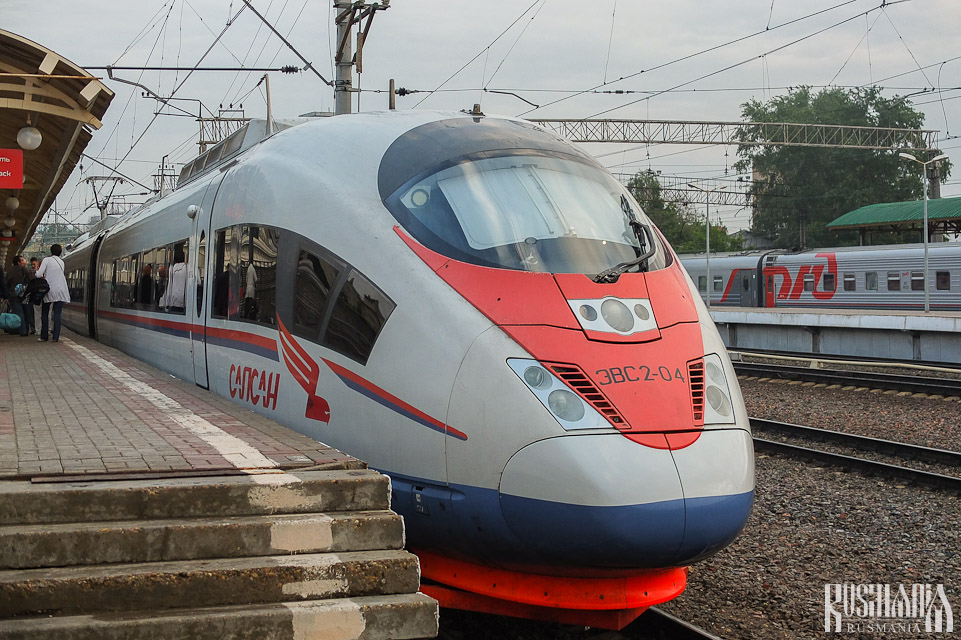
Direct to Suzdal
Buses directly to Suzdal leave from Moscow’s Schyolkovsky Bus Station. There are about 9 buses a day and it takes around 4½ hours depending on traffic. The buses stop at Vladimir too. Using this option will mean a rather exhausting day trip.
Orientation and Main Sights
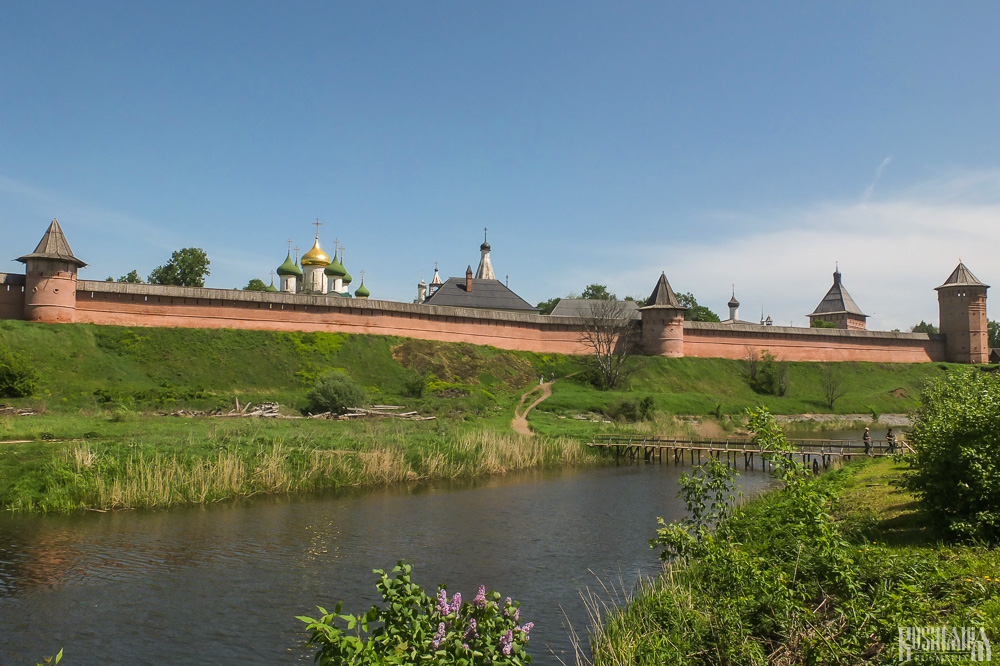
Suzdal is a relatively small city and it is not difficult to walk around the city to see most of the sights.
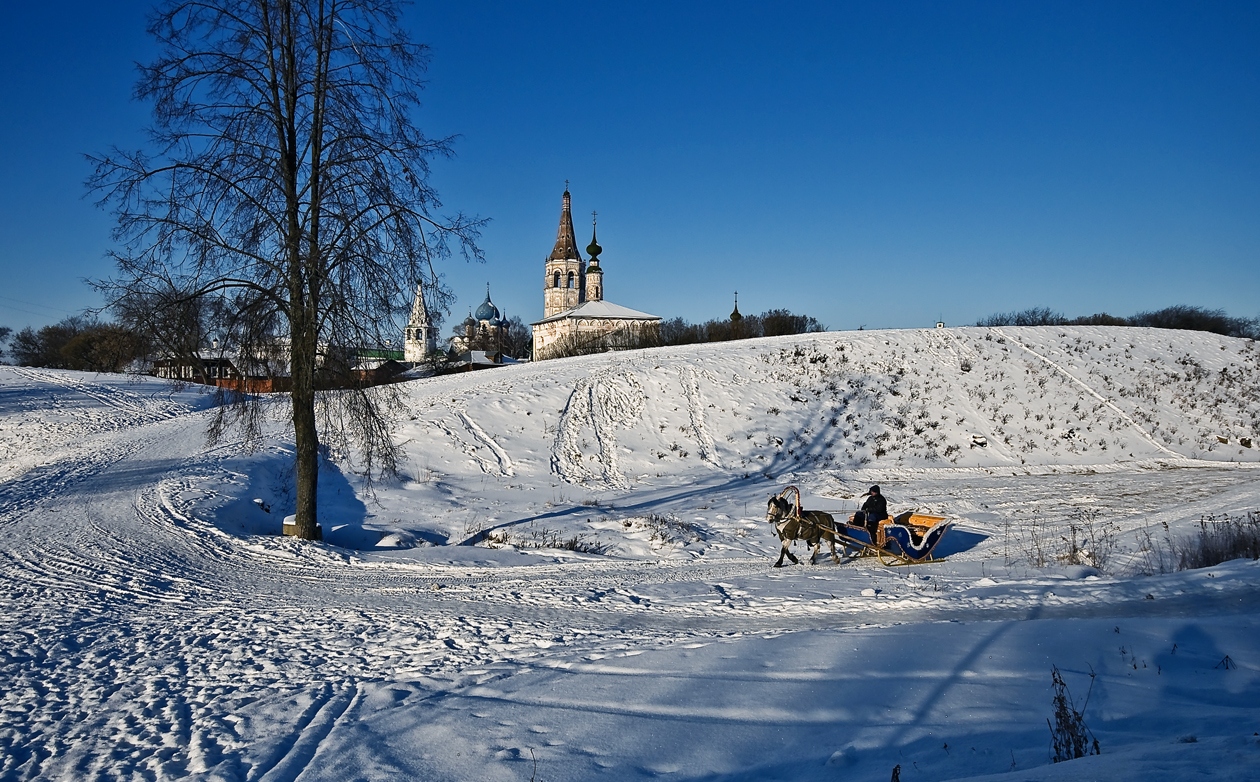
The main road in the city is Ulitsa Lenina which runs north across the whole city.
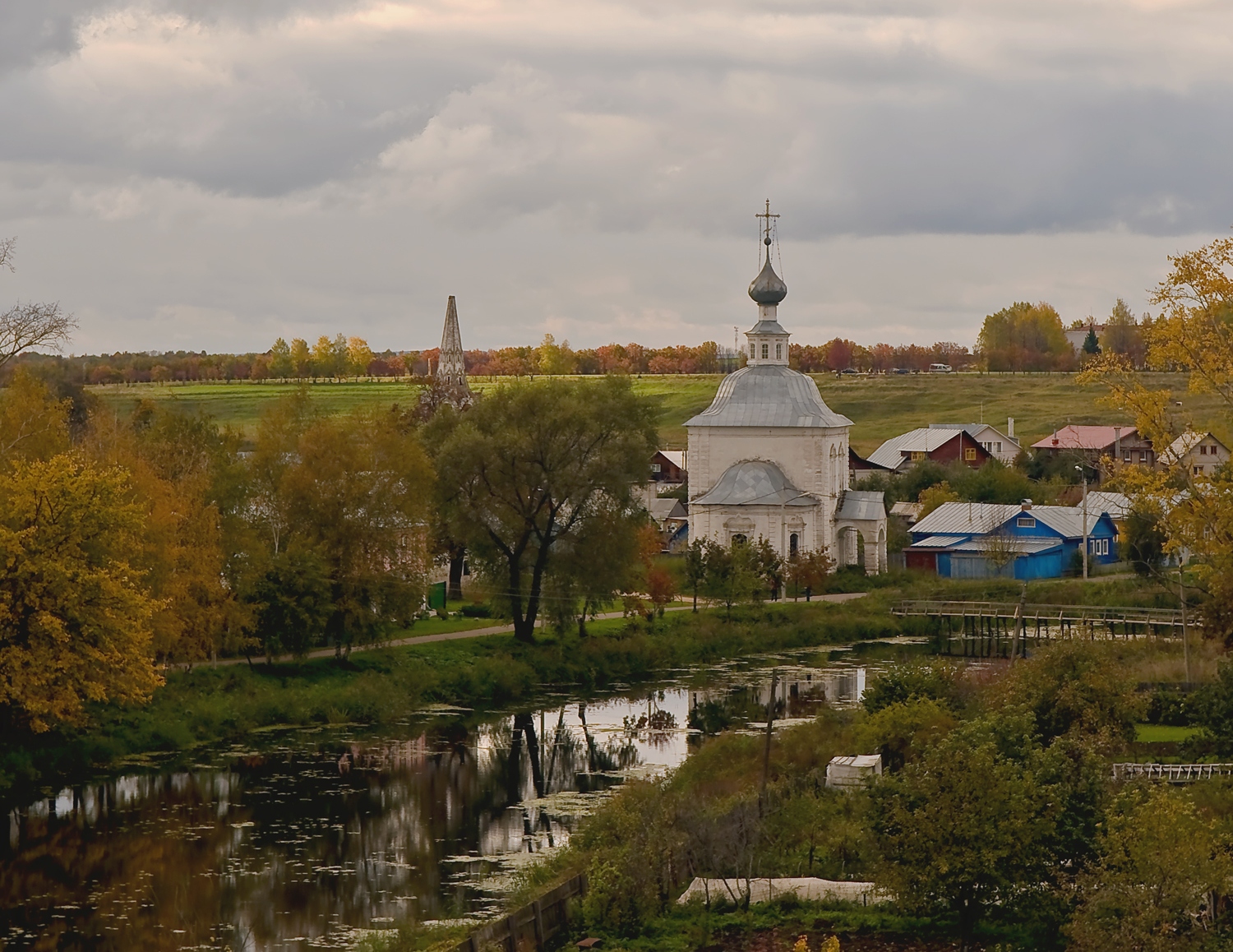
The main sights of Suzdal are located either on or just off this road, including the two main sights: the Suzdal Kremlin in the south and the Spaso-Yevfimiev Monastery in the north.
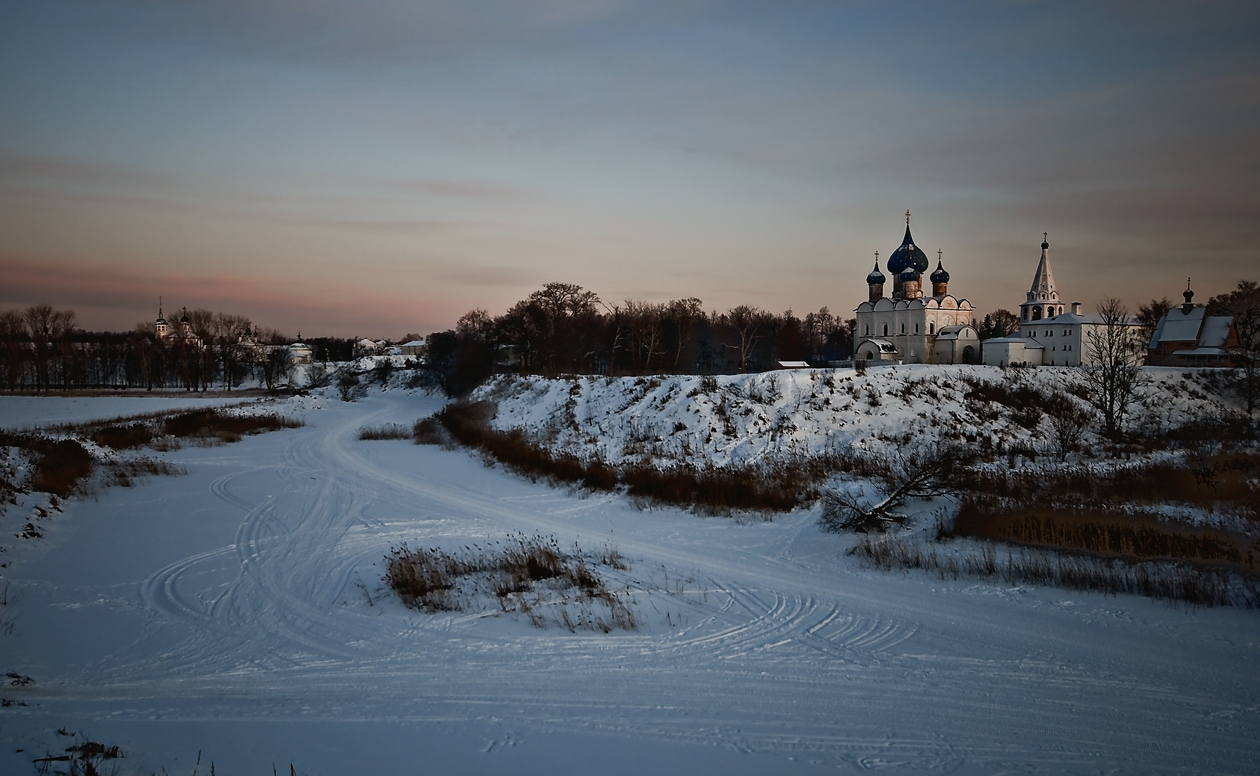
More information about Suzdal can be found on our Suzdal pages.
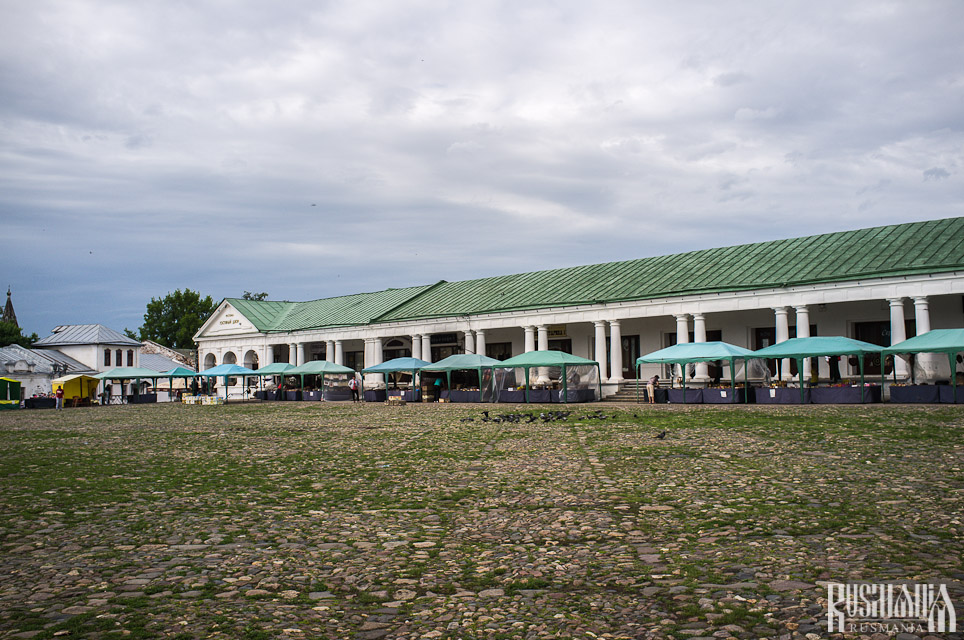
Suzdal is famous for its medovukha (mead) which is an alcoholic drink made out of honey. It can be drunk either hot or cold, meaning it perfect in both summer and winter, and you will find it on practically every menu in the city. There are various flavours of the drink available and even a non-alcoholic version. In addition to medovukha, you can find all traditional Russian souvenirs in the city and there is a big souvenir market on Torgovaya Ploschad.

Plan your next trip to Russia
Ready-to-book tours.
Your holiday in Russia starts here. Choose and book your tour to Russia.
REQUEST A CUSTOMISED TRIP
Looking for something unique? Create the trip of your dreams with the help of our experts.
- Bahasa Indonesia
- Slovenščina
- Science & Tech
- Russian Kitchen
Journey to majestic literary retreats close to Moscow
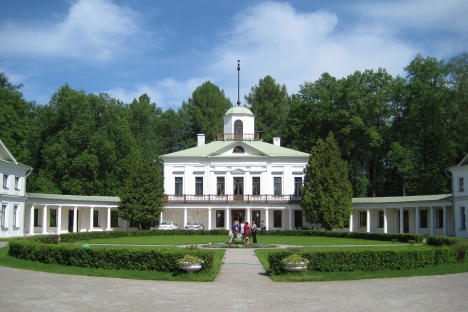
The poet, Mikhail Lermontov spent his summers, as a teenager in the 1830s, at this 19th-century estate Serednikovo just north of Moscow. Source: Phoebe Taplin
One of Moscow’s great attractions is the chance to walk in the footsteps of the world’s great writers: Tolstoy and Chekhov, Pushkin and Pasternak. The city center is crowded with literary museums and memorials, but you can also make atmospheric trips into the countryside and suburbs to discover lakeside mansions or dachas in the forest. Some will be well known to booklovers, but other literary retreats are hidden gems even for life-long Muscovites.
Picnics with Poets
Serednikovo
The poet, Mikhail Lermontov , famous for his Byronic tales of the Caucasus , spent his summers, as a teenager in the 1830s, at this 19th-century estate just north of Moscow, which once belonged to his grandmother. The neoclassical mansion is linked by colonnades to four wings, each with its own belvedere, designed to look out over the park.
Pushkin, a consoling angel guards Russian hearts
Pushkin Hills: The great poet’s country retreat
Boldino: A haven for Russia’s greatest poet
Is poetry always Lost in Translation?
After the revolution, the buildings housed a tuberculosis sanatorium named “Mtsyri” after one of Lermontov’s poems. In 1992, the Lermontov Center secured a 50-year lease on the estate and restored the interiors.
The wooded grounds are a great destination in their own right, with a lake, tearoom, riding school, natural spring, stone bridges and avenues of lime and larch trees. Visitors can catch a train from Leningradsky Station to Firsanovka and then catch bus No. 40.
The estate’s website has a map and the number (+79250106240) to call to arrange excursions (in Russian) around the main house, which is only accessible via a tour.
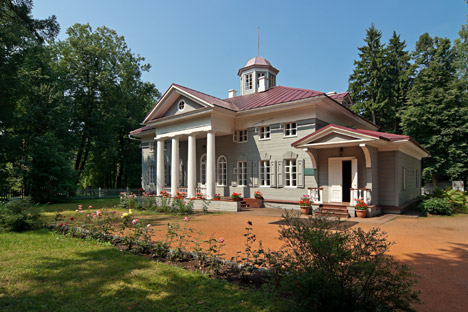
The young poet Pushkin spent several summers in Zakharovo estate. Source: Lori/Legion Media
The poet Alexander Pushkin also spent many childhood summers in the Moscow countryside with his grandmother. Maria Hannibal was descended from Pushkin’s enslaved-African-great-grandfather and her reconstructed house is now a museum with an annual Pushkin Festival on the first Sunday in June.
A statue of Pushkin with his grandmother marks the poet’s favorite place, where, as a child, he said he wanted to be buried, while a second boyish bronze figure looks out across the lake. Trains run from Belorussky Station and take about an hour.
Shakhmatovo
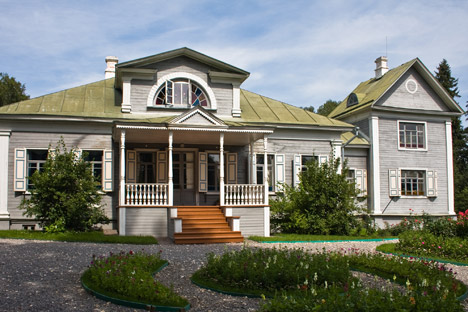
The symbolist poet Alexander Blok is not very well known outside Russia, but the beautiful country estate of Shakhmatovo is worth visiting even if you have never heard of him. Source: Lori/Legion Media
A visit to the wooden house where the poet Alexander Blok lived, surrounded by flowering meadows, is a lovely day trip. Blok’s grandfather called it “a corner of paradise not far from Moscow.”
The nearby village of Tarakanovo has a monument to the poet and his wife next to the dilapidated church where they married, and a small museum. The main estate, a mile away along a country lane, includes a faithful reconstruction of Blok’s charming house , set in wooded gardens, sloping down to a pond.
Tea with Tolstoy, Chekhov or Pasternak
Yasnaya Polyana
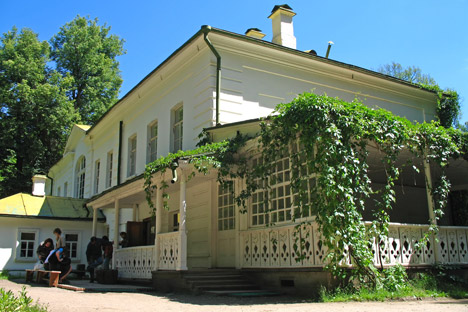
Tolstoy spent most of his life in Yasnaya polyana, and almost all of his books were written there. Source: Lori /Legion Media
Leo Tolstoy’s country estate, near Tula, about three hours south of Moscow is probably the most popular literary day trip and it is certainly worth the journey. The author of War and Peace was born and buried (under a grassy mound) at Yasnaya Polyana and lived most of the intervening 82 years there too.
Tula: Russia’s Armory
A meeting of Tolstoyans
Leo Tolstoy: the last 10 days
Why are Tolstoy’s novels popular in the West?
Prince Sergei Volkonsky, Tolstoy’s maternal grandfather, bought the land in 1763 and built his manor house at the top of the hill.
The atmosphere inside Tolstoy’s house, with its vine-covered veranda, is powerfully charged with reminders of the writer’s life. There are portraits, books and clothes that create that special house-museum illusion that the writer has simply popped out for a walk and might be back for tea. The final room on the tour is the downstairs library, where Tolstoy wrote Anna Karenina .
The museum website gives directions and opening times. There is a log café opposite the gate where you can get a cup of tea or bowl of homemade soup.

Chekhov’s estate Melekhovo in the Moscow region tells the story of the writer’s countryside life and creativity. Source: Lori /Legion Media
Anton Chekhov's country estate south of Moscow hosts a "Melikhovo Spring" international theater festival each year in May, when the garden is full of lilac and cherry blossom. The playwright wrote "The Seagull," "Uncle Vanya," and many of his short stories, while he lived in this wooden house, from 1892 until 1899, before his worsening TB forced him to move south to Yalta.
Trains to the town of Chekhov leave fairly regularly from Kursky Station and take about an hour and a half. From there, the No. 25 bus or a taxi can take you to the little village of Melikhovo . There is no cafe at the museum so stock up in town.
Peredelkino
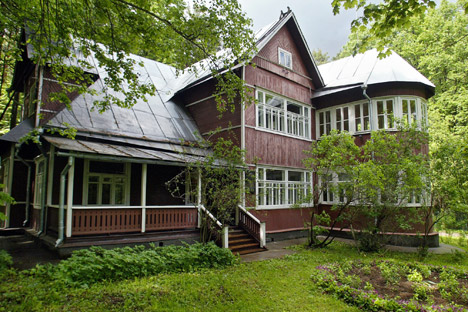
Peredelkino, which is just a twenty-minute train ride from Moscow, is a cluster of literary dachas. Source: ITAR-TASS
The village where Boris Pasternak wrote Dr Zhivago is just half an hour west of Kievsky Station. The title poem of his 1943 collection, "On Early Trains," describes this journey from Moscow on the electric train, the "lemon-with-incense breath" of the pine trees and the lily of the valley, whose delicate white flowers can still be found in the woods around the writers’ village at Peredelkino.
The interior of Pasternak’s white-trimmed brown dacha is markedly austere. In the bare bedroom and study are his boots, coat and hat. The conservatory, with its samovar and cups, looks out onto the overgrown orchard. The memorial house-museum of Russia's best-loved children's author, Kornei Chukovsky, with its ‘wonder tree' covered in shoes, is round the corner and also worth visiting.
Inspirational suburbs and cemeteries
Troitse Lykovo

Alexander Solzhenitsyn spend his final years шт Troitse-Lykovo. Source: Lori /Legion Media
Alexander Solzhenitsyn , whose books about life in Stalin’s gulags are known around the world, is buried in the picturesque Donskoy cemetery. Fans might also be tempted to visit the village where the reclusive writer, who died in 2008, chose to spend his final years .
The orchards, dachas and gold-domed churches of Troitse Lykovo are like an island of old Russia among the skyscrapers of modern Moscow. The village is on top of a riverside cliff, across the Moscow River from the island of Serebryany Bor (“silver pine forest”). Strogino is the nearest metro station.
Novodevichy Cemetery

Chekhov was buried next to his father at the Novodevichy Cemetery. Source: Lori /Legion Media
The world-famous Novodevichy Convent, with its celebrity cemetery, is close to Sportivnaya metro. Through the archway into the older section is Gogol’s bust or Bulgakov ’s boulder. Nearby, visitors can spot the graves of actors and directors from the Moscow Arts’ Theater marked with the stylized seagull logo, along with Chekhov’s elegant art nouveau arch, under the autumn leaves or the falling snow.
All rights reserved by Rossiyskaya Gazeta.
to our newsletter!
Get the week's best stories straight to your inbox
This website uses cookies. Click here to find out more.
- Tour Account ›
- Travel Forum ›
- Travel Forum
- Independent Trave...
Independent Travel to Moscow and St. Petersburg
My wife and I have traveled independently to many European countries and, after reading many of the comments in this forum, feel like we may be able to do so in Moscow and St. Petersburg as well, although we feel somewhat less comfortable than the other countries where we have traveled in Europe.
My biggest question is how much we will miss by visiting the main sites without a tour guide. In the other European countries we have visited on our own we have been comfortable and satisfied with the level of knowledge we have gained by studying and visiting on our own, although we believe a tour guide or tour company in any country would normally be able to provide greater insight than visiting a site on our own, but about in Moscow and St. Petersburg?
Any thoughts would be appreciated.
Unless you speak at least some Russian and read the alphabet it would be difficult without a guide. Very few signs in English especially in Moscow. Also not too many people speak English there.
I visited St Petersburg last Autumn for a protracted period , and did not find it anymore daunting than any other European city . As Ilja says , learning the Cyrillic alphabet is a big plus . I also found that it was fairly easy to grasp . It will , among other things , enable you to read signs with relative ease . I would answer the main part or your question ( about tour guides ) thus - I am not enamored of tour guides or tours. While I only use a tour under duress ( A sites rules prohibiting an independent visit - ie Glasgow School of Art , Municipal House in Prague , etc ) . Doing your own preparation and homework is the best way , in my opinion . My wife and I ventured through St Petersburg with nary a concern ,and made two day trips outside of the central district ( one was twenty five miles away , and no English speakers in sight ) Figuring out the logistical details , did not present any difficulties . While I never use tours , I am an inveterate eavesdropper , have done so many times , and find , that on balance , the information that they impart is fairly elementary . If you want greater detail , they are unlikely to supply it . I also prefer to go at my own pace , not being rushed and being able to dwell on things that most other visitors barely give a passing glance . If you are interested , let me know . I would be happy to provide you with information that will enable you to travel independently
Thank you, Steven. I am encouraged by your comments and feel the same way you do about tour groups. We are very much willing to prepare in advance and learn the basics of the Cyrillic alphabet to help us have a better experience.
I would be very interested in learning more about your experience in Russia and receiving any additional information you can provide on independent travel there, starting perhaps with obtaining the visa.
I am not opposed to hiring a private or small group guide for a specific site or for a day trip outside St Petersburg and Moscow, but, like you said, I much prefer the freedom of staying at places as long or short as I want and seeing the sites that interest me most. For example, neither my wife nor I are big into shopping, yet most tour itineraries leave afternoon time for just that. Not interested!
Please provide whatever you may feel would be helpful for us.
Russ , I see you are quite near San Francisco - you can start by looking at the VISA procedure , it's fairly straightforward . Since there is a consulate in San Francisco - look here http://www.consulrussia.org/eng/visa-sub1.html
And here - http://ils-usa.com/main.php
Having always traveled independently, we thought we could do a better job than any tour. How misguided (pun intended) we were. Now that we have had the experience of having someone native to the area walk us around and explain things through a personal perspective we realize how much we missed. For St. Petersburg I highly recommend http://www.peterswalk.com/tours.html . This is not a traditional guided tour, but an opportunity to receive some orientation to the area as well as insight into the "Russian soul". I think if you did this upon arrival the rest of your time would be much more meaningful. We really liked the http://www.pushka-inn.com . The location is superb (just around the corner from the Hermitage square), the rooms lovely, the included breakfast at the restaurant next door ample and overall an excellent value. We used this company to get our visa: https://www.passportvisasexpress.com/site/san_francisco_customer_service Note that it costs about the same for a 3-year visa as a one-year, and you never know if you might want to return within that more extended window of time. It is not cheap, so factor that into your planning.
If you like traveling without a guide in other countries and find this satisfying, the same will be true in Moscow and St. Petersburg. Of course it's not either/or - you can certainly take a guided walk or boat tour, for instance.
I cannot emphasize enough the importance of learning Cyrillic if you're going on your own. The book I used was Teach Yourself Beginner's Russian Script, which was great. It breaks down the alphabet into letters that are the same as English, letters that look the same but are pronounced differently, etc. It's out of print, but you can get used copies on Amazon: http://www.amazon.com/Teach-Yourself-Beginners-Russian-Script/dp/0071419861/ref=sr_1_2?ie=UTF8&qid=1459701143&sr=8-2&keywords=teach+yourself+russian+script
Russia is indeed a bit more "foreign" than say, Italy. However, in Moscow and St. Petersburg, I found enough English to be able to get by. Many restaurants had English menus and/or English speaking staff, for instance. This was most emphatically not true in Vladimir and Suzdal (two cities in the Golden Ring outside Moscow). I went with my sister, a Russian speaker, and if she hadn't been there, I would have been in big trouble. So, if you want to see places outside these two big cities, use a guided tour (even if just for that part). Also, Moscow and St. Petersburg are huge cities. Coming from New York, I wasn't intimidated, but those not used to a megacity may not be so cavalier (even I found them overwhelming at times, especially Moscow).
I found both Lonely Planet and Rough Guide to be helpful, and both to have various errors. Look at both, buy whichever one has a more recent edition, and then be prepared to have to discard some of the advice therein. Also, these places change more quickly than places in Western Europe. Be very careful of outdated advice. For instance, I was there in 2001 and 2010, so I won't give you any specifics on getting a visa - that changes constantly.
Just as a teaser, two things I saw and loved that I doubt would be included in any escorted tour are the Gorky House in Moscow (an Art Nouveau wonder) and the Sheremyetov Palace in St. Petersburg (it's now a museum of musical instruments, and the decor is amazing, particularly in the Etruscan Room).
Thanks for all the good advice. Any additional thoughts are welcomed.
One of history's seminal works pertaining to Russian history and culture and a MUST for anyone contemplating a visit or simply interested , is this fine work from 1980 - http://www.amazon.com/Land-Firebird-The-Beauty-Russia/dp/096441841X
This is about you and not about Petersburg. Do you like guided tours? We don't and didn't find that a guide added to our experience in China where we did hire private guides mostly for the logistics; it was easy to have someone drive us places. But once at a site, we didn't need the guide. I felt the same way about our 9 nights in Petersburg. We did hire a guide for the trip to the Catherine Palace again for the ease of logistics for us Olds. Here is our visit: https://janettravels.wordpress.com/2016/01/23/an-easy-trip-to-the-catherine-palace/ There are also snapshots of the Church on Spilled Blood in this photo journal. Having someone pick us up at the apartment and get us in without line ups and shepherd us through the palace steering clear of the tour groups was lovely. But we didn't need commentary because we can read and prepare.
You certainly don't need a guide for the Hermitage (we spent 4 days there), the Russian Museum, the Kazan Cathedral or Church on Spilled Blood or the Faberge Museum. We enjoyed a number of self guided walking tours including a couple from Rick Steves guidebooks. We took the canal cruise suggested by RS that had an English commentator. I would not take one without that as you will be totally clueless. The commentator was not all that good but at least we had some idea what we were seeing. So for people like us who like to do our own thing and can read a guidebook and don't particularly like to be led about, a tour is not needed. If you enjoy tour groups, then go for it. Petersburg is easy to negotiate. It helps if you can read the cyrillic alphabet and it is also useful to have the google translate ap on your phone. We found ourselves translating packages in grocery stores with it and the occasional museum sign or menu. I have one food I need to avoid and so it was handy to have the translator to talk with waiters (I could either show them the sentence, or play it for them or play it to myself and then repeat it to the waiter -- that all worked well)
Dear Russ, I cannot help you with Moscow, but about four years ago, my husband and I went to St Petersburg on our own. But, we did use a private guide for 4 half days. We both feel that our guide absolutely made our trip (we stayed 6 or 7 nights). We used a company owned by Tatyana Chiurikova, www.tour-stpetersburg.com I cannot say enough good things about her and our experience. I emailed her and we worked out a schedule/ sights that was tailored to our interests. She also offered some recommendations, which we took. The guide will meet you at your hotel. And frequently, at certain places, with the guide, we were able to skip the long entrance lines. We had an half day driving tour of the city (car, driver, & guide). You are taken to & go in places such as Peter & Paul Fortress, some of the cathedrals, etc. We had a half day with the guide at the Hermitage which ensured that we would see the major sights there. And, of course, you can stay after your guide leaves or return another day. Also, we had the guide for Peterhof (a must & go by boat) and Catherine's Palace. I hope that you will go to the website. As I said, our guide made our trip. I am positive that we would have missed quite a bit on our own everyday. And I'm sure we would have wasted a lot of time trying to get to various place.This was the best of both worlds, a guide where needed and plenty of time on our own. Whatever you do, I'm sure that you will love St Petersburg! Ashley
I am curious about the lines as we encountered no lines on our trip -- but it was in September. We got tickets for the Hermitage at machines and skipped those lines and our guide for the Catherine Palace which was our only guided experience (as noted before, chosen for the logistics of getting there) had arranged tickets and we didn't have a line, but then we also didn't see lines. We did not find lines at any other site.
Both Moscow and St Petersburg I've done on my own, that is together with the Dear Partner. I can't remember any problem getting where we wanted to go. The Metro systems are well signed, and with a little exercise and patience you can recognize the station names. With a good map and a good guide - we had the Rough Guides - that part of the logistics is solved. The language is a major problem, but the usual tricks of pointing, looking helpless, and making a joke of it all do wonders. I would hate to be led by a guide, but for others it is a comfortable thought.
We also did both cities on our own. I found the DK Eyewitness guide for Moscow has the best map. I used the one from our library (kept the book at home). Took the smaller RS book for St. Petersburg ( his book on northern cities). His map and restaurant ideas were all good. We also downloaded the Google maps in our Android Samsung tablets/phones for both cities and then could get directions to any place we typed in. The blue ball guided us everywhere. I'm sure we missed somethings by not having a guide, but we just enjoy walking around and getting a sense of a place. If you like art, The Hermitage is great. We went 3 times and still missed alot. In St. Peterburg we stayed at the 3 Mosta which we loved (quite and not far from the Church of Spilled Blood.) We also loved the Georgian food in both cities. There's a great Georgian restaurant near the 3 Mosta hotel. We're now in Belarus- very scenic. Enjoy your trip!!
This topic has been automatically closed due to a period of inactivity.

Moscow - Sheremetyevo Airport (SVO) transfer to Moscow - Vnukovo Airport (VKO)
Complete the search form to find the best transport prices in moscow - vnukovo airport (vko).
Origin not known. Check the value and select between results suggested.
Destination not known. Check the value and select between results suggested.
You should at least select 1 adult passenger.
Additional Luggage?
Children + -
Please indicate child age.
Each passenger may carry one standard piece of luggage and one small item of hand luggage (for example a handbag or laptop). If you have additional or extra large baggage or sporting equipment, select from the options below:
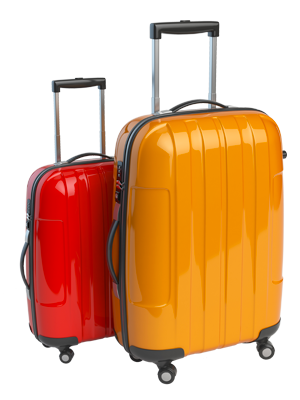
Please insert the date and time of your flight arrival (not take off), as informed by the airline. The driver will take into account luggage collection and immigration formalities.
Please select hours.
Please select mins.
Please insert the date and time the flight takes off, as informed by the airline. The pick-up time will be calculated automatically taking into account journey time and check-in time at airport.
How it works

Our wide selection of carefully selected local companies offer a wide variety of transport options suitable for all budgets from economical shared bus rides to chauffeur services.

Prices includes fixed fares, taxes & gratuity with no hidden costs. You will receive confirmation of your booking via email confirming your trip details.

The day of your trip, your transport will be waiting for you for a simple, stress-free journey to your destination.
Moscow - Sheremetyevo Airport (SVO) transfer to Moscow - Vnukovo Airport (VKO) map
Moscow - sheremetyevo airport (svo) to moscow - vnukovo airport (vko) transfer time.
54 minutes approximately
Moscow - Sheremetyevo Airport (SVO) to Moscow - Vnukovo Airport (VKO) distance
37 Miles approximately
60 Kilometres approximately
This map and route are for information purposes only, with no guarantee of accuracy or completeness. The transport company retains absolute discretion to choose the route to your destination. Distance and travel times are only indicative between origin and destination points.
In and around Moscow - Vnukovo Airport (VKO)
- Moscow - Domodedovo Airport (DME)
- Moscow - Sheremetyevo Airport (SVO)
- Moscow - Vnukovo Airport (VKO)
Transport to Moscow - Vnukovo Airport (VKO)
- Wheelchair adapted
- Airport transfer
- Private transfer
- Chauffeur service
- Cruise transportation
Fastest way to get from Moscow - Sheremetyevo Airport (SVO) to Moscow - Vnukovo Airport (VKO)
The fastest way to get to Moscow - Vnukovo Airport (VKO) will be with a pre-booked taxi or minibus waiting to whisk you off on arrival.
Cheapest way from Moscow - Sheremetyevo Airport (SVO) to Moscow - Vnukovo Airport (VKO)
The most economical way to travel to Moscow - Vnukovo Airport (VKO) is by bus. Shared transport options will be more budget friendly as you will be sharing the travel with other passengers.
Save time, save money!
Sign up and we'll send the best deals to you.
Please enter a valid e-mail.
Please keep me updated on special offers and promotions from Shuttle Direct. If you don't love it, just unsubscribe. Read our privacy policy for details.
You should accept terms of service.
- Train Stations
- Travel Guides

Session timed out
Session has timed out, you should fill in the form again and request a new quote.

IMAGES
VIDEO
COMMENTS
Dr. Jose Rizals Travel Map Philippines Philippines 1882 May 1882 -Rizal, together with Antonio Rivera boarded the salvadora headed to Madrid Madrid Spain Spain June 13, 1882 Rizal arrived in Barcelona and that is where they stayed for three months Madrid Spain September 2, 1882. Get started for FREE Continue.
2.SINGAPORE. · May 9, 1882 - the first stop over of Rizal on his way to Spain.Rizal boarded the boat Djemnah to continue his trip to Spain. 3.SRI LANKA. May 18, 1882 - it was Rizal's journey to Colombo, Sri Lanka that was important for him to improve his knowledge of the French language while he on board French ship, Djemah. 4.
Dr. Jose P. Rizal travels to give his countrymen the freedom and peace they deserve. first travel abroad (1882 1887) after finishing his medical course in. ... Rizal's Last Travel July 31, 1896 - Rizal travelled in Manila together with Narcisa, Josephine and some nephews accordance to the order of Governor- general Blanco. August 6, 1896 ...
The Travels of Rizal. Disillusioned with how Filipinos in the Philippines were regarded as second-class citizens in institutions of learning and elsewhere, the National Hero Jose Rizal left the country in May 1882 to pursue further studies abroad. He enrolled in a course in medicine at the Universidad Central de Madrid in Spain.
17 May 1882. Rizal arrived at Punta de Gales. 18 May 1882. At 7:30 a.m., he left Punta de Gales for Colombo. In the afternoon, Rizal arrived at Colombo and in the evening the trip was resumed. 26 May 1882. Rizal was nearing the African coast. 27 May 1882. He landed at Aden at about 8:30 a.m.
It would be good to don an overcoat and travel the paths of Dr Jose Rizal. Early days in Calamba. ... America and Japan as a globetrotting ilustrado of the "enlightened" educated class, Rizal's journey started out in the little town of Calamba, Laguna. ... The 900m2 Relief Map of Mindanao in front of the St James Church (established 1871 ...
Know the life, history, and works of Rizal. This website provides an interactive view in the life, history, and works of Jose Protacio Alonso Realonda Mercado Rizal.
Map of Rizal's Travels 1882-1892
VISUAL MAP OF RIZAL'S TRAVEL, SINGAPORE ( Rizal3 , On May 3, 1882, Jose Rizal sailed through a Spanish steamer named Salvadora bound for Singapore, Rizal1 ), EUROPE/PARIS ( Rizal1 , November 1885 - Rizal arrived in Paris and would spend four months in what he called the "costliest capital in Europe." • Jose Rizal became an apprentice of a French ophthalmologist named Dr. Louis de Weckert ...
The "Rizal's Madrid" walking tour is available as a booklet and includes a map and itinerary. (The PDF document is designed to be printed on both sides of landscape A4 paper and folded into an A5 booklet) A WALKING TOUR OF PLACES ASSOCIATED WITH DR. JOSÉ RIZAL.
Rizal's Second Travel Abroad. Aug 4, 2021 •. 14 likes • 49,545 views. AI-enhanced description. Yosef Eric C. Hipolito, BA, LPT. Rizal traveled extensively through Hong Kong, Macau, Japan, the United States, and various countries in Europe from 1888 to 1891. Some key experiences included meeting O-Sei-San in Japan who became his lover and ...
Albany and New York City. Once in Albany, Rizal once again noted the sheer size of the city and the Hudson River which the train crossed. He noted the beauty of the place, and of the ships ferrying along the Hudson. It was in New York, on Sunday May 13, 1888, that Jose Rizal's transcontinental trip ended.
Rizal would eventually be arrested, tried and convicted for rebellion, sedition and conspiracy. On December 30, 1896, he was executed by firing squad. Considered to be his final work, Rizal penned Mi Ultimo Adios while imprisoned in Fort Santiago during the days leading up to his execution. From the heart and soul of a man about to make his ...
Jose Rizal is a multifaceted hero to many Filipinos. To kids in grade school, he's the "hero of heroes". To scholars, he's a genius. As though his famous novels Noli Me Tangere and El Filibusterismo were not enough to earn the praise of Filipinos, he even went as far as being a scientist, a doctor, a polyglot, a poet, a journalist, and an architect, all rolled into one.
Timeline of Rizals Travel PDF Image Zoom Out. Events Philippines 1882 May 3, 1882 ... June 15, 1882 - September 2, 1882 % complete -Rizal arrived and stayed at Barcelona for 3 months. - Rizal enrolled at the Universidad Central De Madrid. Germany 1886-1887 April 22 1886 - March 21 1887 ... to Jose Ma. Basa in Hong Kong saying that he was ...
travel of Rizal. Please send this to us with what you were doing
Rizal's life in Germany revisited through new map. Jun 19, 2017 12:06 PM PHT. Carol RH Malasig. The Philippine embassy in Germany launches an illustrated map retracing Jose Rizal's adventures in ...
Travels. Rizal's First Trip Abroad. 3 May 1882. Rizal left Philippines for the first time Spain. He boarded the Salvadora using a passport of Jose Mercado, which was procured for him by his uncle Antonio Rivera, father of Leonor Rivera. He was accompanied to the quay where the Salvadora was moored by his uncle Antonio, Vicente Gella, and Mateo ...
Overview. Distances. 220km Moscow to Vladimir; 23km Vladimir to Suzdal. Total time on train. approximately 3½ hours (Strizh: Moscow to Vladimir return) Total time on bus. 1-1½ hours (Vladimir to Suzdal return) Accessibility for foreigners rating. 4/5 - established tourist route, some English-speakers.
The estate's website has a map and the number (+79250106240) to call to arrange excursions (in Russian) around the main house, which is only accessible via a tour. Zakharovo The young poet ...
I used the one from our library (kept the book at home). Took the smaller RS book for St. Petersburg ( his book on northern cities). His map and restaurant ideas were all good. We also downloaded the Google maps in our Android Samsung tablets/phones for both cities and then could get directions to any place we typed in.
Moscow - Sheremetyevo Airport (SVO) to Moscow - Vnukovo Airport (VKO) distance. 37 Miles approximately. 60 Kilometres approximately. Show map. This map and route are for information purposes only, with no guarantee of accuracy or completeness. The transport company retains absolute discretion to choose the route to your destination.